#fatma sultan daughter of mustafa iii
Text
reallifesultanas Thank you very much for your answer! Yes I meant Dumas not Alderson sorry for that! Is there a reason for the illogical amount of salaries? I mean the earlier salary lists of registers clearly help us to indentify the sultanas. The 1555-1556 registers are 100% logical; the 1603-1604 registers are still logical: Safiye, Handan, aunts of Ahmed, great-aunt of Ahmed, great-great aunt's daughter (Ayse Hümasah), cousin of Mehmed III, far relatives. But then there is this one.. highest salary for the full sisters of the sultan is logical, but then what does the daughters of Murad III doing there? Fahri/Kamer and Hümaşah/Rukiye* are surely Murads and so Ümmügülsüm could be also Murad's... For the lesser salaries Beyhan, Safiye, Hatice I could imagine they were Mehmed III's, maybe Beyhan's Mustafa was Mirahur Mustafa? But these stipends are just not logical... (*Murad III's daughte Rukiye was said to be married to Nakkas Hasan not Huma). And for Ümmügülsüm there is that one report from 1688 (Katherine Trumbull) when it is said she developed a relationship with Sultana Ümmühan, the aunt of the deposed Sultan Mehmed IV, through visits to the harem. This Ümmühan could be Halil Pasha's wife and so Murad III's/Mehmed III's daugher, or is it more likely not an aunt but sister/cousin? Or she truly can be Ahmed I's daughter? There is this 85 numaralı Mühimme defteri that provide some informations suggesting suggesting Ümmügülsüm was sister of Murad IV. Sadly I dont have the book so I cannot check how true is this claim...
I hope you don't mind if we continue here on ottomanladies.
I know the harem register doesn’t seem to make sense from the point of view of hierarchy but we must remember that the hierarchy could be broken on the basis of favouritism. Maybe those aunts were more favoured than the others.

In this table we can see Gevherhan Sultan, a great-aunt of Ahmed I’s, the reigning sultan. Dumas mistakenly identifies her as a daughter of Murad III’s and a concubine of non-haseki rank, but the reality is she’s first because she’s the most senior princess alive. If you look closely at the second category — “Frais de bouche” — she receives the same amount as Ayse and Fatma, Safiye’s daughters. Gevherhan was quite favoured by Ahmed I because she had trained Handan in her household. Also, her late husband Cerrah Mehmed Pasha had performed Ahmed I’s circumcision. Borekçi says that she was the only recipient — apart from Handan and Safiye — of sable fur:
“A register preserved in the Topkapı Palace Archives gives further details of the gifts Gevherhan Sultan received from her great grand-cousin. At the beginning of this register, there are records of the furs and robes of honor sent by the new sultan to his larger family right after his enthronement on December 27, 1603. Here, Gevherhan Sultan is listed as a recipient of a sable robe (semmûr kaplu nimtâne) and recorded as the third female member of the dynasty after the retiring queen mother, Safiye Sultan, and the new queen mother, Handan Sultan, and before all other living sisters and daughters of Murad III and Mehmed III -- a clear indication of her privileged position. Later, on February 6, 1604, she again appears in the register, this time as the only female family member apart from Handan Sultan to receive a fur-trimmed silk robe.”
(I believe the 6 şehzâdegân are unmarried princesses that Ahmed still had to matchmake but this is another story)
I know it’s Rukiye that Öztuna says has married Nakkaş Hasan Pasha but he could be wrong tbh, it wouldn’t be the first time. Also, neither Sakaoğlu or Uluçay confirm this; they give no information about Rukiye except for the identity of her mother. Unfortunately Öztuna never gives his sources so we don’t know where he found that Rukiye was married to Nakkaş Hasan Pasha. I would trust the harem register and contemporary sources (the ragusian diplomat, in this case) more tbh… both say that Nakkaş Hasan Pasha was married to a princess called Hümaşah…
About Beyhan… the problem is the wife of Mirahur Mustafa Pasha went on to marry Cigalazade Sinan Pasha’s son Mahmud Bey in 1612, and died before 1620, the date of Mahmud Bey’s second wedding, which means she shouldn’t have been alive in 1638-39. The Ragusian letter date 1648, though, lists a Beyhan Sultan widow of “Nideli Mustafa Pasha”— unfortunately, I can’t say who this man is or what “nideli” means.
I do agree with you, though. I think that Beyhan, Safiye, and Hatice are daughters of Mehmed III. We know that seven princesses were married in the summer of 1613, after all. A letter dated July 1613 by a Ragusian diplomat, furthermore, says that “at the present there are fifteen sultanas”.
About Katherine Trumbull, I guess you mean this:
“While in Istanbul, Katherine had developed a relationship with Sultana Ümmühan, Mehmed IV’s aunt and sister to Ibrahim II. On 14 July 1688, Katherine met with Ümmühan for the first time, and the two women continued to meet in the imperial harem throughout Trumbull’s residence in Istanbul. During these visits, Katherine must have been accompanied by someone with knowledge of spoken Turkish, or else it is unclear how she would have been able to communicate with the women she met in the harem. At any rate, when she returned to the embassy, she brought to Trumbull news of things taking place in the Ottoman court.” — Ghobrial, John-Paul A, 'Overcoming Distance in Everyday Communication', The Whispers of Cities: Information Flows in Istanbul, London, and Paris in the Age of William Trumbull (Oxford, 2013; online edn, Oxford Academic, 23 Jan. 2014)
Unfortunately, William Trumbull’s diaries were not published, they’re in the British Library. I always like to cross-check my sources and the fact that I can’t read the original kind of annoys me. Ümmühan is quite an unusual name for an Ottoman princess: Ümmi means mother and Han sovereign, it kind of sounds like “valide sultan”, which is why I thought it was a title for a moment but I couldn’t find anything to confirm this. It is kind of interesting, though, that Öztuna says that Ibrahim’s eldest daughter was called Ümmügülsüm, who could have been named after another Ümmügülsüm (the one that in 1622 was unmarried? Who knows)
The Mühimme defteri is not a book but a collection of copies of all the imperial decrees or decisions taken in the imperial council. They’re numbered and the number 85 refers to the years 1630-31. You can find the PDF for free on the website of the Turkish National Archives but, well, it’s in Ottoman Turkish.

(This is one of them)
So I can’t really read it even though I have it.
#ask: ottoman history#reallifesultanas#gevherhan sultan daughter of selim ii#rukiye sultan daughter of murad iii#humasah sultan daughter of murad iii#unnamed daughters of mehmed iii#i'm sorry if the layout looks weird but it's been so long since i used tumblr and i'm a little rusty
11 notes
·
View notes
Text
Sultanate of Women (3/7)
Nurbanu Sultan (c.1525/ 7 December 1583)

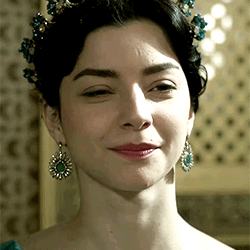
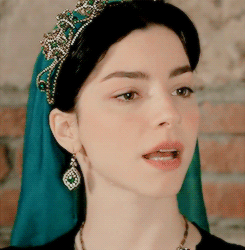
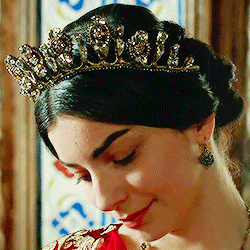
Daughter of Nicolo Venier and Violanta Baffo
Haseki Sultan (Legal Wife) of Sultan Selim II and Valide Sultan of Sultan Murad III
Mother of Sultan Murad III, Sah Sultan, Ismihan Sultan, Gevherhan Sultan, and Fatma Sultan
Grandmother of Sultan Mehmed III, Sehzade Mahmud, Sehzade Mustafa, Sehzade Oman, Sehzade Bayezid, Sehzade Selim, Sehzade Cihangir, Sehzade Abdullah, Sehzade Ahmed, Sehzade Yakub, Sehzade Alemsah, Sehzade Yusuf, Sehzade Hüseyin, Sehzade Korkud, Sehzade Ali, Sehzade Ishak, Sehzade Alaeddin, Sehzade Davud, Sehzade Suleiman, Sehzade Yahya, Hümasah Sultan, Ayse Sultan, Fatma Sultan, Mihrimah Sultan, Rukiye Sultan, Mihriban Sultan, and Fahriye Sultan.
Mother-in-law of Çakırcıbaşı Hasan Pasha, Zal Mahmud Pasha, Sokullu Mehmed Pasha, Kalaylıkoz Ali Pasha, Safiye Sultan, Piyale Pasha, Cerrah Mehmed Pasha, and Kanijeli Siyavuş Pasha
Fun Fact For Newbies: Nurbanu Sultan was born Cecilia Venier-Baffo
47 notes
·
View notes
Photo

🦚👑 Current Ottoman Family👑🦚
His Highness Sultan Ahmed III (Center)
Rabia-Sermi Haseki Sultan and her son Abdul-Hamid I (Right-Standing)
Mihrisah Sultan, her son prince Mustafa III an her daughter Samiye Sultan (Left)
Fatma Hatun pregnant to her first child (right-sitting)
#sims 4 ottoman empire#sims 4 headpiece#sims 4 headdress#sims 4 sultana#sims 4 sultana dress#sims 4 accessories#sims 4 maxis match#sims 4 head accessories#sims 4 head jewels#sims 4 royal cc#sims 4 medieval cc#sims 4 turkish cc#sims 4 arabian cc#sims 4 arabic cc#sims 4 middle east#sims 4 middle east cc#sims 4 asian cc#sims 4 asian#sims 4 korean#sims 4#sims 3#sims 2#sims 1#sims#ts4 historical cc#sims 4 royalty mod#sims 4 empire#sims 4 ottomans#sims 4 ottoman royals#sims 4 turkish royals
21 notes
·
View notes
Text
Portrait of Emetullah Rabia Gülnüş / Emetullah Rabia Gülnüş portréja
Origin and youth
Emetullah Rabia Gülnüş was a woman of Greek descent who was certainly captured during the Venetian-Ottoman War. The grimace of fate is that the outbreak of the war was attributable to Mehmed IV, who later became Emetullah's sweetheart. In the summer of 1645, Ibrahim I declared war on Venice and sent a large Turkish army to Crete. The immediate cause of the war was that Maltese pirates captured an Ottoman ship carrying several influential people. Among them was the wet-nurse of Mehmed IV and her own son, whom Sultan Ibrahim I loved very much. So much that the he cared more with the wet-nurse's son than he did with his own child, Mehmed. The war lasted for decades, until 1669, so it is not possible to determine exactly when Emetullah was captured.
Emetullah was a gift from a certain Deli Hüseyn Pasha, who took the Cretan slaves he had captured to the Sultan’s palace and recommended the bests to the sultan’s harem. Deli Hüseyn Pasha died in 1659, so Emetullah definitely joined the harem before that time. This, unfortunately, does not help us, for considering that Emetullah was already a favorite of the Sultan in 1660 and this had to be preceded by several years of education, so most likely she was captured before 1654. Many give the year 1645 as captivity, however, this is almost ruled out. In general, children under the age of 5 were not caught, because they caused more trouble than benefit, and were more likely to die during the long and tumultuous journey. Assuming that Emetullah was roughly the same old — or younger — than Mehmed IV (born in 1642), she could have been captured in 1648 at the earliest.
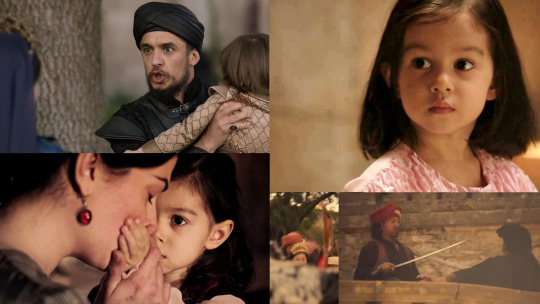
The consort
Emetullah Rabia Gülnüş matured into a beautiful young woman, making her perfectly suited to entertain the sultan. Emetullah is one of the few sultanas whose appearance is known in considerable detail. One of the ambassadors had the opportunity to see one of Emetullah's clothes and belts, on the basis of which he thought the Sultana was a taller-than-average but graceful. The same ambassador heard from his informant that the Sultana had fine skin and blue eyes. Other descriptions said she had black curly hair. Towards the end of her life, Emetullah was reportedly more plump than slender.
It is not known exactly when Mehmed started receiving concubines and when Emetullah became his favorite. Mehmed's first child, a girl, was born in 1660. According to circumstantial evidence, this girl, Hatice, was the first child of Emetullah Rabia Gülnüş. Based on this, we can assume that Emetullah became Mehmed’s partner in the late 1650s. However, their relationship had not really deepened at this point, as Mehmed spent the next period away from his harem, traveling a lot.
Shortly afterwards, the Sultan moved his entire court to Edirne, making it the de facto capital of the Empire. It was a perfect timing that his firstborn son, Mustafa, was born here in 1664. Mehmed was so happy for the birth of his son that he piled up the child’s mother, Emetullah Rabia Gülnüş, with amazing gifts and never left the woman alone from then on. He took her with him on his hunts and even on his campaigns. Together they had at least two more children, Ahmed (later Ahmed III) in 1673 and Fatma Emetullah in 1675. In addition to the four children mentioned above, Mehmed certainly had other children (Ayşe, Bayezid, Ümmügülsüm, Süleyman). The identity of their mother is unknown, it could have been Emetullah Rabia Gülnüş, but even other concubines.
As the Sultan’s favourit concubine, the mother of his children, Emetullah, was the second highest-ranking woman in the harem. Her relationship with the first woman of the harem is controversial. Some say Emetullah was an evil, violent woman who regularly confronted her mother-in-law, Mehmed’s mother, Turhan Hatice Valide Sultan. However, there is no evidence to that effect, in fact! Emetullah and Turhan certainly worked together periodically to achieve their political goals. In 1682, Grand Vizier Merzifonlu Kara Mustafa Pasha began to anger Turhan more and more, as he tried to make her political influence impossible. We don’t know what motivation Gülnüş was for, but she helped Turhan remove the pasha. Eventually, unfortunately, Turhan died before the pasha was deposed. Either way, this collaboration makes it unlikely that the relationship between Emetullah and Turhan would have been bad. In addition, Emetullah had a good relationship with Turhan’s eunuch, Yusuf Agha, which would also not have been possible if the two women did not like and respect each other.
Many blame Emetullah’s ambitions for the supposedly fragile relationship. Legend has it that Mehmed’s beloved, Emetullah Rabia Gülnüş, tried to persuade him to execute his half-brothers and make their own sons his heir instead. However, knowing the infinitely close relationship between Mehmed and his sons, we cannot rule out that Mehmed himself wanted to change the inheritance. Whoever was its inventor, no one supported the idea, not the people, not the pashas and not even Mehmed’s mother, Turhan. Turhan, to protect Prince Suleiman and Ahmed from death and his son from fall, always kept her two foster sons with her. If Turhan traveled, she took them with her so that Mehmed would not execute them in her absence.
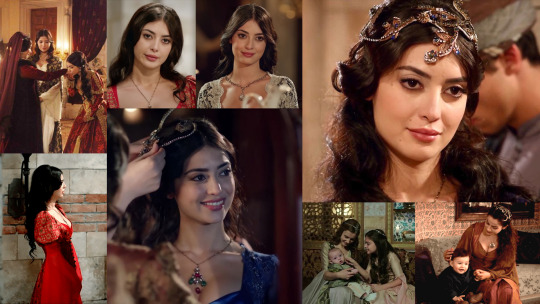
Sultana on the campaigns
After the birth of Mustafa, the sultan did not want to go anywhere without Emetullah and his son. From then on, Emetullah accompanied her sweetheart everywhere, hence her nickname became, the "itinerant sultana". The first such campaign took place in 1672, when Mehmed took the whole harem of his, his mother, his Haseki, and his sisters to Polish territory. From this trip we are left with a description of an incident in which Emetullah’s silver carriage was stuck in the mud due to bad weather on the way to the Babadag camp. The sultan could not wait for hours for the carriage to be released, so Fazıl Ahmed Pasha, the Grand Vizier, was left with his men to help the Sultana. On August 28, 1672, Kamianets-Podilskyi fell and became the property of the Ottomans. Mosque were formed from all the churches in the city, one of which was named in honor of Gülnüş. With this she became the first and only Haseki Sultan to enjoy such a privilege.
They spent a few months near the front and then returned to Edirne. However, the agreement was crossed by the Polish, so in 1673 Mehmed was forced to return to the front and took his sweetheart with him again. This is particularly noteworthy and not just because the sultans had not taken their wives on the battlefield for centuries, but because Emetullah Rabia Gülnüş was already heavily pregnant with her second son. The baby was finally born during the campaign on 31 December 1673 at Hacıoglupazarı in present-day Bulgaria. This was the only time an Ottoman prince was born near the battlefield, away from the security of the capital or the provinces. The fact is, however, that this camp was also very far from the real war.
After the success of the Polish campaign, the Sultan retreated to Edirne, where in 1675 he organized a huge ceremony in which his two sons, Mustafa and Ahmed, were circumcised and his eldest daughter, Hatice, was married off. Mehmed's appearance was reported at the event, but many praised the princes and Emetullah Rabia Gülnüş, who attended the ceremony as well. According to one agha present, the Sultana was a beautiful woman with chesnut hair. It is questionable, of course, to what extent we can believe such descriptions, since her hair was certainly covered with a veil, even if she was present. Then in 1676 Mehmed embarked on another campaign - again, of course, with his sweetheart on his side - this time to match the Russians. The aim of the campaign was to rule over today's Ukrainian - then Polish - territories. Finally, in 1681, the campaign ended with an agreement.

The first woman in the harem and the fall
Whatever the relationship between Turhan and Emetullah was, with the death of Turhan in 1683, the road to the top of the harem opened up before Emetullah. Although her large-scale construction projects, as a Haseki, began during Turhan’s life, her political career could have really gained momentum only without Turhan. There is a known case, for example, in which one of Mustafa's teachers, Feyzullah Efendi, who was very close to Emetulla committed a mistake and was faced with severe punishment. Eventually, Emetullah intervened and saved the man's life.
However, Emetullah could not enjoy the control of the harem for long. The 1680s were about a series of tragedies. The enemies of the Ottoman Empire clashed in turn and squeezed the Ottomans more and more out of European territories. This caused general dissatisfaction, and then over time, chaos, executions, financial problems spread throughout the empire, more and more rebellions set in, and even natural disasters plagued the empire. Turhan's death was practically sealed the end of Mehmed IV also. He became increasingly unpopular, and suffered the final blow in 1687. After the tragic outcome of the second battle of Mohács, Mehmed was dethroned and his younger brother, Suleiman, was put to the throne, as Suleiman II. This meant Emetullah's move to the Old Palace.
Not only did Emetullah face the loss of her power and exile, but she was separated from her beloved. A member of Mehmed’s harem, the poet Afife Kadin, at this time composed one of her poems about Gülnüş. According to the verse, Gülnüş sobbed and shouted as long as her lungs could hold, while her loved one was torn away from her and locked up. While Mehmed sobbed quietly in the kafes, his beloved cried across the wall. In another verse of hers, Afife writes, "Tell Gülnüş to wear black / to suffer in pain / While Sultan Mehmed weeps in Şimşirlik" We do not know if Emetullah and Mehmed may have met until Mehmed's death in 1693.
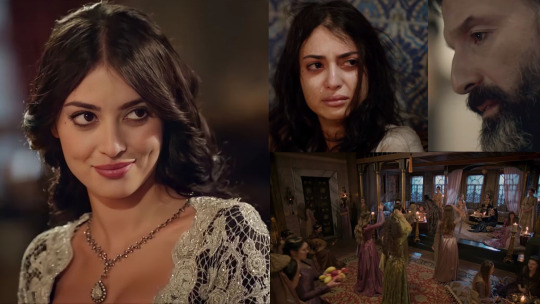
Back to the top
Due to Süleyman II's ill condition, followed by the old Ahmed II, Emetullah did not have to linger in the Old Palace for long. In 1695, barely 8 years after her retirement, Emetullah was able to return as Valide Sultan. Ahmed II died in Edirne and Mustafa II took his place as Sultan. Emetullah was then in the Old Palace in Istanbul, so thats where she received the news. As part of a huge ceremony, Emetullah went from the Old Palace to Topkapi Palace and from there to Edirne. On the way to Edirne, several bridges had to be renovated before the Valide Sultan's arrival. The costs of the bridge-renovations were recorded in the registers as Ahmed II's funeral expenses. Arriving in Edirne, her son welcomed the new Valide Sultan.
In the following years Edirne remained the de facto capital of the Empire. The sultan spent only a short period of time in Istanbul with his court, and then they were not resided in Topkapi Palace either, but preferred other palaces. Mustafa and Emetullah quickly gathered their trustworthy men around them and began to rule according to their own tastes. Thus, for example, the Feyzullah Efendi who had previously been rescued from execution by Emetullah, became the Seyhülislam. During Mustafa's reign, Emetullah built an unprecedented power for herself, her all-intertwined political influence was huge and also her son openly discussed state affairs with her. In addition, Emetullah regularly showed up among the people, leaving the harem, visiting her daughters or foundations. She lived a fairly free life. So much that at certain events she stood right next to her son, veiled but not hiding. At other times, she welcomed Seyhülislam, Grand Vizier, or other influential statesmen openly or were present at parades in Eyüb.
Emetullah’s tremendous influence over her son, the rampant corruption among statesmen, and the neglect of Istanbul all provoked the displeasure of the people. In 1703 a huge revolt broke out in the capital, but it quickly reached Edirne as well. Emetullah provided good advice to her son, trying to quickly replace any statesman who might have harmed them, but it was too late. During the rebellion Mustafa II was dethroned. The rebels refused to ascend Mustafa's younger brother, Ahmed, as he was also the son of Emetullah. They wanted to replace Mustafa II with the 11-years-old Şehzade Ibrahim, the son of Ahmed II and his Haseki, Rabia Sultan . The ulema, however, rejected this based on the boy's age, and as a polite gesture a letter was written to Emetullah asking for permission to dethrone Mustafa and replace him with Ahmed III. Although she had no real say, Emetullah responded in agreement:"All of you have requested in concord and unanimity that my majestic son Sultan Ahmed be seated on the imperial throne and that my other son Sultan Mustafa be deposed. Your petition has been complied with."
However, the dethronement of Mustafa was far from enough for the rebels. Gülnüş was demanded to leave Edirne or Topkapi Palace and retire to the Old Palace. Emetullah did indeed remain there until the circumstances calmed down enough for her to return. Perhaps she did not even regret her retreat, for Mustafa, her firstborn son, died in December 1703 of natural causes.
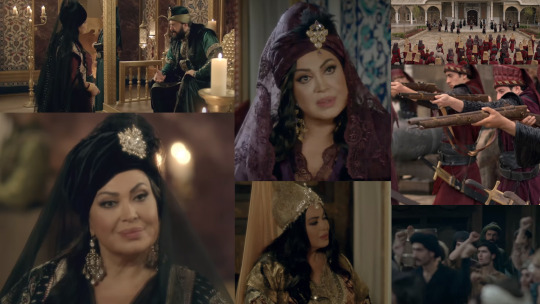
Shadow Valide
The pashas tried to keep Gülnüş away from her son and from state affairs because they feared a revenge from Emetullah on Mustafa's dethronement and subsequent death. They feared they would face a revenge campaign like the pashas who in 1648 dethroned and executed the son of Kösem Sultan, Ibrahim I. In the meantime, however, it turned out that Gülnüş did not even think of revenge. She learned from her previous mistakes and from the end of the Kösem Sultan, so she was much more careful and respectful with the pashas from then on than before. There were rewards for this.
One of Ahmed III’s first steps was to take the imperial court back to Istanbul, so Edirne ceased to be the de facto capital. To increase the sultan’s popularity among the people of Istanbul, plenty of public events were organized, such as archery competitions. Of course Gülnüş tried to help her second son, Ahmed III, but she did it all from the background. However, her participation in political life is by no means conditional. Several letters have survived, which she exchanged with the pashas during Ahmed III's reign. When one of the Grand Vizier tried to have a say in which eunuch Gülnüş would appoint to lead the harem, he quickly found himself without a position. So Emetullah Rabia Gülnüş did not give up politics at all, only she played it in a smarter and less spectacularly way.
Emetullah Rabia Gülnüş returned to the limelight once again. In 1709, during the war between the Russians and the Swedes, the Swedish king was captured and then found refuge in the Ottoman Empire. The king sought the help of the Ottomans to regain his throne. Emetullah, along with the second Vizier Damat Silahdar Ali Pasha, publicly stood by the king's request and tried to persuade Ahmed III to wage war against the Russians. The other members of the divan, such as the Grand Vizier, did not agree at all with Gülnüş's will, so a controversy ensued. Ahmed III finally, following the advice of his mother, went to war with the Russian Empire in 1711. The war ended with treaties.
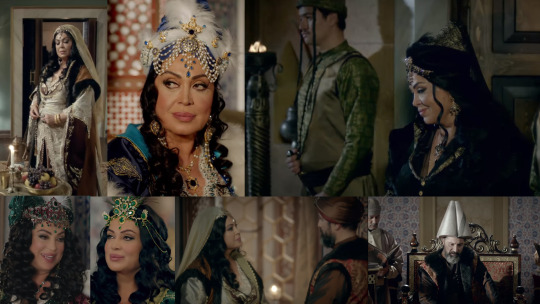
Her death and legacy
Emetullah Rabia Gülnüş followed her son from Istanbul to Edirne in the summer of 1715 to welcome there the army of the Grand Vizier, who had successfully re-conquered Morea from the Venetians. Her health here deteriorated in a few months and whatever the best doctors of the empire tried Emetullah Rabia Gülnüş died on November 6, 1715, in Edirne. Funeral prayers were held in Edirne in the presence of the Sultan, Grand Vizier, Ulema, and all important statesmen, and then her body was taken back to Istanbul, where she was buried in her own tomb on November 9th. Her turbe is particularly interesting, as it is not covered like most dynastic tombs, but open to the sky. By the way, this was built according to Emetullah's own wishes. There are plenty of plants and water in the octagonal tomb, which was probably built like that to resemble the Garden of Eden.
During her life, Gülnüş managed several construction projects, during which mosques, soup kitchens, schools, fountains and a tomb were built. But she converted several former churches into mosques also, and others were named in his honor. She also had foundations in Üsküdar, Edirne, Chios, Mecca, Medina, Kastamonu and Menemen.
Emetullah Rabia Gülnüş was the last valide sultan during the period of the Sultanate of Women. Although there were still some Valide with exceptional influence after her, no one was able to gain an influence similar to her and her predecessors anymore. It was the death of Emetullah Rabia Gülnüş that eventually completely ended the period of the Sultanate of Women. True, she was not the last Haseki Sultan, because her brother-in-law Ahmed II had a Haseki, Rabia Sultan, but the woman had already died in 1712 before Emetullah. So with the death of Gülnüş, on November 6, 1715, the more than 180-years-long period of the Sultanate of Women ended. The Sultanate of Women was followed by the Tulip era, which was one of the most peaceful periods in the history of the empire, during which Westernization began.

Used sources: B. İ. Argıt - A Queen Mother and the Ottoman Imperial Harem: Rabia Gülnuş Emetullah Valide Sultan (1640-1715); M. Ç. Uluçay - Padişahların Kadınları ve Kızları, Y.Öztuna - Devletler ve Hanedanlar, N. Sakaoğlu - Bu Mülkün Kadın Sultanları; M. Özgüleş - The Women Who Built the Ottoman World: Female Patronage and the Architectural Legacy of Gülnuş Sultan; H. G. Majer - The Harem of Mustafa II (1695-1703); J. Dumas - Les perles de nacre du sultanat; A. D. Alderson - The Structure of the Ottoman Dynasty; L. Peirce - The Imperial Harem: Women and Sovereignty in the Ottoman Empire; C. Finkel - Osman's Dream: The Story of the Ottoman Empire
* * *
Származása fiatalkora
Emetullah Rabia Gülnüş görög származású nő volt, akit minden bizonnyal a velencei-oszmán háború során fogtak el. A sors fintora, hogy a háború kirobbanása köthető volt IV. Mehmedhez, aki később Emetullah kedvese lett. I. Ibrahim 1645 nyarán hadat üzent Velencének és egy nagy török sereget küldött Krétára. A háború közvetlen oka az volt, hogy máltai kalózok fogtak el egy oszmán felségjelzésű hajót, mely több befolyásos személyt szállított. Köztük volt IV. Mehmed szoptatósdajkája és annak fia, akiket I. Ibrahim szultán nagyon szeretett. Olyannyira, hogy a szoptatósdajka fiával többet törődött, mint saját gyermekével, Mehmeddel. A háború évtizedeken keresztül zajlott, egészen 1669-ig, így pontosan nem meghatározható, hogy Emetullah mikor esett fogságba.
Emetullah egy bizonyos Deli Hüseyn Pasa ajándéka volt, aki a saját maga által ejtett krétai rabszolgákat vitte a szult��ni palotába és a legjobbakat a szultán háremébe ajánlotta. Deli Hüseyn Pasa 1659-ben elhunyt, így Emetullah mindenképp ezen időpont előtt került a hárembe. Ez sajnos nem segít nekünk, ugyanis tekintve, hogy Emetullah 1660-ban már a szultán kedvence volt és ezt több éves oktatás kellett, hogy megelőzze, a legvalószínűbb, hogy 1654 előtt esett fogságba. Sokan adják meg az 1645-ös évet, mint fogságba esés, azonban ez szinte kizárt. Általában 5 év alatti gyerekeket nem fogtak el, velük több volt a baj, mint a haszon és nagy eséllyel haltak meg a hosszú és viszontagságos út során. Ha feltételezzük, hogy Emetullah nagyjából egy idős volt - vagy fiatalabb -, mint IV Mehmed (1642), legkorábban 1648-ban eshetett fogságba.

Az ágyas
Emetullah Rabia Gülnüş csodaszép fiatal nővé érett, így tökéletesen alkalmas lett a szultán szórakoztatására. Emetullah azon kevés szultána közé tartozik, akinek külsejét meglehetősen részletesen ismerjük. Az egyik követnek lehetősége volt látni Emetullah egyik ruháját és övét, mely alapján az átlagnál magasabb, de kecses nőnek gondolta a szultánát. Ugyanez a követ úgy hallotta informátorától, hogy a szultánának finom bőre és kék szeme van. Más leírások szerint fekete göndör haja volt. Élete vége felé Emetullah a beszámolók szerint inkább volt telt, mint karcsú.
Nem tudni pontosan, hogy Mehmed mikor kezdett ágyasokat fogadni és hogy Emetullah mikor vált a kedvencévé. Mehmed első gyermeke, egy kislány 1660-ban született. Közvetett bizonyítékok alapján ez a lány, Hatice, Emetullah Rabia Gülnüş első gyermeke volt. Ez alapján feltételezhetjük, hogy Emetullah a kései 1650-es években vált Mehmed partnerévé. Kapcsolatuk azonban ekkoriban még nem mélyült el igazán, hiszen Mehmed a következő időszakot a háremétől távol töltötte, sokat utazott.
A szultán nemsokkal később az egész udvartartását áthelyezte Edirnébe, ezzel gyakorlatilag mintegy de facto fővárossá tette meg az általa annyira kedvelt várost. Tökéletes időzítés volt, hogy elsőszülött fia, Musztafa itt látta meg a napvilágot 1664-ben. Mehmed annyira örült fia születésének, hogy elképesztő ajándékokkal halmozta el a gyermek anyját, Emetullah Rabia Gülnüşt és innentől kezdve sosem hagyta magára a nőt. Magával vitte a vadászataira, sőt hadjárataira is. Együtt még legalább két gyermekük született, Ahmed (későbbi III. Ahmed) 1673-ban és Fatma Emetullah 1675-ben. Mehmednek a fent említett négy gyermeken kívül bizonyosan voltak más gyermekei (Ayşe, Bayezid, Ümmügülsüm, Süleyman). Az ő anyjuk kiléte ismeretlen, lehetett Emetullah Rabia Gülnüş is, de akár más ágyasok is.
Mint a szultán kiemelt ágyasa, gyermekeinek anyja Emetullah a hárem második legmagasabb rangú asszonya volt. Viszonya a hárem első asszonyával ellentmondásos. Egyesek szerint Emetullah gonosz, erőszakos nő volt, aki rendszeresen szállt szembe anyósával, Mehmed édesanyjával, Turhan Hatice Valide szultánával. Azonban nincs erre utaló bizonyíték, sőt! Emetullah és Turhan időszakosan bizonyosan együttműködtek, hogy politikai céljaikat elérjék. 1682-ben Merzifonlu Kara Mustafa Pasa nagyvezír egyre jobban kezdte dühíteni Turhant, ugyanis próbálta ellehetetleníteni annak politikai befolyását. Azt nem tudjuk, hogy Gülnüş milyen motiváció miatt, de segített Turhannak a pasa eltávolításában. Végül sajnos Turhan előbb halt meg, minthogy a pasát lefokozták volna. Akárhogyan is, ez az együttműködés teszi valószínűtlenné, hogy Emetullah és Turhan közt rideg lett volna a kapcsolat. Mindemellett Emetullah jó viszonyt ápolt Turhan eunuchjával, Yusuf Agával, ami szintén nem lett volna lehetséges, ha a két nő nem kedveli és tiszteli egymást.
Sokan a feltételezett rideg kapcsolatért Emetullah ambícióit okolják. A legenda úgy tartja, hogy Mehmedet kedvese, Emetullah Rabia Gülnüş szultána igyekezett meggyőzni arról, hogy végeztesse ki elzárva tartott féltestvéreit és helyettük közös fiaikat tegye meg örökösének. Ismerve azonban a Mehmed és fiai közt fennálló végtelenül szoros viszonyt, nem zárhatjuk ki, hogy maga Mehmed kívánta megváltoztatni az öröklést. Akárki is volt a kifundálója, senki sem támogatta az ötletet, sem a nép, sem a pasák és Mehmed anyja, Turhan szultána sem. Turhan, hogy megóvja Szulejmán és Ahmed hercegeket a haláltól, fiát pedig a bukástól, mindig maga mellett tartotta két nevelt fiát. Ha Turhan utazott, magával vitte őket, nehogy távollétében Mehmed kivégeztesse őket.

Szultána a fronton
Musztafa születése után a szultán nem kívánt Emetullah és fia nélkül bárhová is menni. Innentől kezdve Emetullah mindenhová elkísérte kedvesét, innen ered beceneve, a "vándorló szultána" (itinerant sultan). Az első ilyen hadjáratra 1672-ben került sor, mikor Mehmed az egész háremét, anyját, Haszekijét, húgait is magával vitte a lengyel területekre. Erről az útról marad ránk egy esemény leírása, miszerint babadagi tábor felé vezető úton a rossz időjárási viszonyok miatt Emetullah ezüst fogata beragadt a sárba. A szultán nem várhatott órákat, amíg az elakadt kocsit kiszabadítják, így Fazıl Ahmed Pasa, a nagyvezír maradt hátra embereivel, hogy segítse a szultánát. 1672. augusztus 28-én Kamianets-Podilskyi elesett és az oszmánoké lett. A városban található összes templomból mecsetet alakítottak, melyek közül az egyiket Gülnüş tiszteletére nevetek el. Ezzel ő lett az első és egyetlen Haszeki szultána, aki ilyen kiváltságban részesülhetett.
Néhány hónapot töltöttek a front közelében, majd visszatértek Edirnébe. A megkötött egyezséget azonban a lengyelek keresztülhúzták, így 1673-ban Mehmed kénytelen volt visszatérni a frontra és magával vitte kedvesét is. Ez azért különösen említésre méltó, mert azontúl, hogy a szultánok évszázadok óta nem vitték harctérre asszonyaikat, Emetullah Rabia Gülnüş már előrehaladott terhes volt második fiával, akit végül a hadjáraton szült meg 1673. december 31-én Hacıoglupazarınál, a mai Bulgária területén. Ez a valaha volt egyetlen olyan eset, amikor egy oszmán herceg a hadszíntéren született meg, távol a főváros vagy a provinciák biztonságától. Tény azonban, hogy ez a tábor is igen távol volt a valódi fronttól.
A lengyel hadjárat sikere után a szultán Edirnébe vonult vissza, ahol 1675-ben hatalmas ünnepséget szervezett, melyen két fiát Musztafát és Ahmedet körülmetélték, legidősebb lányát Haticét pedig kiházasította. Az eseményen beszámoltak Mehmed külleméről, de sokan méltatták a herceget és Mehmed mellett az ünnepségen résztvevő Emetullah Rabia Gülnüşt is. Az egyik jelenlévő szerint a szultána gesztenyebarna hajú, gyönyörű nő volt. Kérdéses persze mennyire hihetünk az ilyen jellegű leírásoknak, hiszen haját egészen biztosan fátyol fedte, ha jelen volt is. 1676-ban aztán Mehmed újabb hadjáratra indult - természetesen ismét kedvesével az oldalán -, ezúttal az oroszokkal kívánt megmérkőzni. A hadjárat célja az mai ukrán - akkori lengyel - területek feletti uralom volt. Végül 1681-ben megállapodással zárult le a hadjárat.

A hárem első asszonya és a bukás
Bármilyen volt is Turhan és Emetullah kapcsolata, Turhan 1683-as halálával megnyílt Emetullah előtt az út a hárem csúcsára. Bár nagyszabású Haszekiként végzett építési projektjei még Turhan életében elkezdődtek, politikai karrierje ekkor lendülhetett meg igazán. Ismert például egy eset, mikor Musztafa egyik tanítója - aki igen közel állt Emetullahoz - Feyzullah Efendi hibát követett el és súlyos büntetés volt kilátásba helyeztve számára. Végül Emetullah közbelépett és megmentette a férfi életét.
Emetullah nem élvezhette azonban sokáig a hárem irányítását. Az 1680-as évek a sorozatos tragédiákról szóltak. Az Oszmán Birodalom ellenségei sorra fogtak össze egymással és szorították egyre kintebb az oszmánokat az európai területekről. Ez általános elégedetlenséget okozott, majd idővel káosz, kivégzések, anyagi problémák terjedtek el mindenhol a birodalomban, egyre több lázadás indult útjára és még természeti katasztrófák is sújtották a tragikus helyzetben lévő birodalmat. Gyakorlatilag már anyja halálával megpecsételődött Mehmed sorsa, egyre népszerűtlenebb lett, a végső csapást pedig 1687-ben szenvedte el. A második mohácsi csata tragikus kimenetele után Mehmedet trónfosztották és öccsét, Szulejmánt ültették trónra, aki így évtizedekig tartó elzárt élete után megkezdhette uralkodását II. Szulejmán néven. Ez egyet jelentett Emetullah Régi Palotába való költözésével.
Emetulláhnak nem csak a hatalma elvesztésével és száműzetéssel kellett szembenéznie, de elválasztották őt kedvesétől. Mehmed háremének egy tagja, a költő Afife Kadin ekkoriban komponálta egyik Emetullah Rabia Gülnüşről szóló versét. A vers szerint Gülnüş szultána addig zokogott és kiáltozott, mikor kedvesét a szultánt elszakították tőle és elzárták, amíg csak bírta a tüdeje. Mehmed pedig csendben zokogott a kafesben, míg szerelme a fal túloldalán sírt. Egy másik versében azt írja "Mondd Gülnüşnek, viseljen feketét / hogy abban szenvedje el fájdalmát / míg Mehmed szultán Şimşirlikben sír". Nem tudjuk, hogy Emetullah és Mehmed találkozhattak e még Mehmed 1693-as haláláig.

Vissza a csúcsra
II. Szulejmán szultán beteges állapota miatt, majd az őt követő II. Ahmed kora miatt nem kellett Emetullahnak sokáig a Régi Palotában senyvedni. 1695-ben, alig 8 év után Emetullah valide szultánaként térhetett vissza. II. Ahmed Edirnében hunyt el és a szintén jelenlévő II. Musztafa vette át a helyét szultánként. Emetullah ekkor Isztambulban a Régi Palotában volt, itt kapta meg a hírt. Emetullah hatalmas ünnepség keretei között a Régi Palotából a Topkapi Palotába ment, onnan pedig Edirnébe. Az Edirnébe való út során több hidat kellett megújítani a valide szultána előtt, melyek költségeit mind II. Ahmed temetési költségeiként vezettek fel a jegyzőkönyvekbe. Edirnébe érve fia üdvözölte az új valide szultánát.
A következő években is Edirne maradt a birodalom központja, csak rövidebb időszakot töltött az udvar Isztambulban és akkor sem a Topkapi Palotában voltak, hanem más palotákat részesítettek előnyben. Musztafa és Emetullah gyorsan maguk köré gyűjtötték megbízható embereiket és saját szájízük szerint kezdtek uralkodni. Így lett például Seyhülislam abból a Feyzullah Efendiből, akit korábban már egyszer Emetullah megmentett a kivégzéstől. Musztafa uralkodása alatt Emetullah sosem látott hatalmat épített magának, mindent átszőtt politikai befolyása de fia is nyíltan megvitatta vele az államügyeket. Emellett Emetullah rendszeresen mutatkozott az emberek közt, hagyta el a háremet, látogatta meg lányait vagy alapítványait. Meglehetősen szabad életet élt. Olyannyira, hogy bizonyos eseményeken egyenesen fia mellett állt elfátyolozva, de nem elbújva. Máskor a Seyhülislamot, nagyvezírt vagy más befolyásos államférfiakat fogadott nyíltan vagy parádékat tekintett meg Eyüb városrészben.
Emetullah hatalmas befolyása fiára, az államférfiak közt dívó korrupció és Isztambul elhanyagolása mind a nép nemtetszését váltották ki. 1703-ban hatalmas lázadás tört ki a fővárosban, de gyorsan elérte Edirnét is. Emetullah jó tanácsokkal látta el fiát, igyekeztek gyorsan leváltani minden államférfit, aki kárt okozhatott volna nekik, de már késő volt. A lázadás során II. Musztafát trónfosztották. A lázadók azt is elutasították, hogy Musztafa öccsét, Ahmedet emeljék trónra, hiszen ő is Emetullah fia volt, helyette II. Ahmed és Haseki Rabia szultána 11 éves fiát, Ibrahim herceget akarták a trónra ültetni. Az ulema azonban ezt elutasította a fiú korára való tekintettel és illedelmes gesztusként levelet írtak Emetullahnak, melyben engedélyét kérték Musztafa trónfosztásához. Bár nem volt valódi beleszólása, Emetullah beleegyezően válaszolt.
A lázadóknak azonban Musztafa trónfosztása távolról sem volt elég. Követelték, hogy Gülnüş hagyja el a Topkapi palotát és vonuljon vissza a Régi Palotába. Emetullah valóban ott maradt, amíg a körülmények nem nyugodtak meg eléggé visszatéréséhez. Talán nem is bánta az elvonult életet, ugyanis Musztafa, elsőszülött fia 1703 decemberében természetes okok következtében elhunyt.

Árnyék Valide
A pasák azért igyekeztek Gülnüşt távol tartani fiától és az államügyektől, mert attól tartottak bosszút állna rajtuk Musztafa trónfosztása és későbbi halála miatt. Féltek, hogy egy olyan bosszúhadjárattal találnák szembe magukat, mint azok a pasák, akik 1648-ban Köszem szultána fiát, Ibrahimot trónfosztották és kivégezték. Gülnüşről azonban időközben kiderült, hogy eszében sincs bosszút állni. Tanult az esetből és Köszem szultána halálából, így sokkal óvatosabban, tisztelettudóbban viselkedett a pasákkal, mint korábban. Ennek meg is lett az eredménye.
III. Ahmed egyik első lépése az volt, hogy a birodalmi udvartartást újra visszavitte Isztambulba, így Edirne megszűnt de facto fővárosnak lenni. Hogy a szultán népszerűsgét növeljék Isztambul népe között, rengeteg nyilvános eseményt szerveztek, például íjászati bemutatókat. Természetesen Gülnüş második fia, III. Ahmed uralkodása során is kényelemben élt és igyekezett segíteni fiát, de mindezt a háttérből tette. Részvétele a politikai életben azonban egyáltalán nem feltételes. Fennmaradt több levele is, melyet a pasákkal váltott III. Ahmed uralkodása során. Mindemellett, amikor az egyik nagyvezír megpróbált beleszólni abba, hogy Gülnüş melyik eunuchot nevezi ki a hárem élére gyorsan pozíció nélkül találta magát. Emetullah Rabia Gülnüş tehát egyáltalán nem hagyott fel a politikával, csak azt okosabban és kevésbé látványosan tette.
Emetullah Rabia Gülnüş még egyszer visszatért a rivaldafénybe. 1709-ben az oroszok és svédek közti háború során a svéd király fogságba esett, majd az Oszmán Birodalomban talált menedékre. A király az oszmánok segítségét kérte, hogy visszaszerezhesse trónját. Emetullah a második vezír Damat Silahdar Ali Pasával karöltve nyilvánosan álltak a király kérése mellé és igyekeztek rávenni III. Ahmedet, hogy vállaljon háborút az oroszokkal. A divan más tagjai, így a nagyvezír egyáltalán nem értettek egyet Gülnüş akaratával, így vita alakult ki. III. Ahmed végül az édesanyja tanácsát követve bocsátkozott 1711-ben háborúba az Orosz Birodalommal, mely egyezményekkel zárult.

Halála és hagyatéka
Emetullah Rabia Gülnüş 1715 nyarán követte fiát Isztambulból Edirnébe, hogy ott üdvözöljék a nagyvezír seregét, aki sikeresen hódította vissza Moreát a velenceiektől. Egészsége itt néhány hónap alatt leromlott és bármivel is próbálkoztak a birodalom legjobb orvosai Emetullah Rabia Gülnüş 1715. november 6-án, Edirnében meghalt. A temetési imákat Edirnében mondták a szultán, nagyvezír, ulema és minden fontos államférfi jelenlétében, majd testét visszavitték Isztambulba, ahol saját türbéjében temették el november 9-én. Türbéje kifejezetten érdekes, ugyanis nem fedett, mint a legtöbb dinaszitkus türbe, hanem az ég felé nyitott. Ez egyébként Emetullah saját kívánsága szerint épült így. Az oktagonális türbében rengeteg a növény és a víz, mely valószínűleg amiatt épült így, hogy hasonlítson az Édenkertre.
Élete során Gülnüş több építkezési projektet menedzselt, melynek során mecset, leveskonyha, iskola, kút, türbe épült. De több korábbi templomot építtetett át mecsetté, másokat pedig tiszteletére neveztek el. Emellett volt alapítványa Üsküdarban, Edirnében, Chiosban, Mekkában, Medinában, Kastamonuban és Menemenben.
Emetullah Rabia Gülnüş volt az utolsó valide szultána a Nők szultánátusának időszakában. Bár utána is akadt néhány kivételes befolyással bíró Valide, az övéhez és elődeihez hasonló befolyást senkinek sem sikerült többé szerezni. Emetullah Rabia Gülnüş halála volt az, amely végül teljesen lezárta a Nők szultánátusának időszakát is. Igaz, nem ő volt az utolsó Haszeki szultána, mert sógorának II. Ahmednek volt egy Haszekije, Rabia Sultan, a nő már Emetullah előtt, 1712-ben meghalt. Gülnüş halálával, 1715. november 6-n lezárult az a több, mint 180 éves időszak, mely során befolyásosabbnál befolyásosabb nők váltották egymást az Oszmán Birodalom előkelőségei között. A Nők szultánátusát a Tulipán éra követte, mely az egyik legbékésebb időszaka volt a birodalom történetének, és mely során elindult a nyugatosodás a birodalomban.

Felhasznált források: B. İ. Argıt - A Queen Mother and the Ottoman Imperial Harem: Rabia Gülnuş Emetullah Valide Sultan (1640-1715); M. Ç. Uluçay - Padişahların Kadınları ve Kızları, Y.Öztuna - Devletler ve Hanedanlar, N. Sakaoğlu - Bu Mülkün Kadın Sultanları; M. Özgüleş - The Women Who Built the Ottoman World: Female Patronage and the Architectural Legacy of Gülnuş Sultan; H. G. Majer - The Harem of Mustafa II (1695-1703); J. Dumas - Les perles de nacre du sultanat; A. D. Alderson - The Structure of the Ottoman Dynasty; L. Peirce - The Imperial Harem: Women and Sovereignty in the Ottoman Empire; C. Finkel - Osman's Dream: The Story of the Ottoman Empire
#Emetullah Rabia Gülnüş#emetullah rabia gulnus#emetullah rabia#emetullah#rabia#rabia gülnüş#gülnüş#gulnus#Mehmed IV#turhan hatice sultan#turhan hatice#turhan#ibrahim I#sultanate of women#Ahmed II#mustafa ii#ahmed iii#Süleyman II#Suleiman II#ayşe hafsa#Haseki Hürrem Sultan#ayse hafsa sultan#haseki nurbanu sultan#nurbanu valide sultan#Nurbanu Sultan#haseki safiye sultan#Safiye#safiye sultan#handan sultan#halime sultan
60 notes
·
View notes
Photo

Jean Baptiste Vanmour - Ambassador Cornelis Calkoen on audition with Sultan Ahmed III - 1727
In 1727 the Dutch ambassador Cornelis Calkoen asked Van Mour to record his audience with Sultan Ahmed III on canvas. Van Mour was allowed to enter the palace during these ceremonies accompanying the ambassador and his retinue; therefore, he was familiar with the special protocol that prevailed in the Ottoman court for ambassador's receptions. Calkoen took many paintings of Jean Baptiste Van Mour with him, when he was appointed as ambassador in Dresden for the Dutch Republic. In his will of 1762 the bachelor Calkoen directed his nephew and heir Nicolaas to keep the collection together, and it was his express wish that they were to hang in the room of Amsterdam City Hall reserved for directors of Eastern trade. Unbeknownst to him or his heir, soon the city hall itself was ceded to the Franch authorities and became the residence of King Louis Napoleon. Nicolaas, who went on to play a central role in various negotiations on behalf of the Batavian Republic, died himself in 1817 and bequeathed this collection to the closest substitute institution he could think of, namely the Directie van den Levantschen handel te Amsterdam, or 'directors of the trade with the Levant in Amsterdam'. That institute was dissolved in 1826 whereupon the collection was absorbed into the national collection and spread over multiple locations. In 1903 the paintings were reunited and have since been on show together in the Rijksmuseum collection.
Ahmed III (Ottoman Turkish: احمد ثالث, Aḥmed-i sālis) (30 December 1673 – 1 July 1736) was Sultan of the Ottoman Empire and a son of Sultan Mehmed IV (r. 1648–87). His mother was Gülnuş Sultan, originally named Evmenia Voria, who was an ethnic Greek. He was born at Hacıoğlu Pazarcık, in Dobruja. He succeeded to the throne in 1703 on the abdication of his brother Mustafa II (1695–1703). Nevşehirli Damat İbrahim Pasha and the Sultan's daughter, Fatma Sultan (wife of the former) directed the government from 1718 to 1730, a period referred to as the Tulip Era.
The first days of Ahmed III's reign passed with efforts to appease the janissaries who were completely disciplined. However, he was not effective against the janissaries who made him sultan. Çorlulu Ali Pasha, who Ahmed brought to the Grand Vizier, tried to help him in administrative matters, made new arrangements for the treasury and Sultan. He supported Ahmed in his fight with his rivals.
Jean Baptiste Vanmour or Van Mour (9 January 1671 – 22 January 1737)[1] was a Flemish-French painter, remembered for his detailed portrayal of life in the Ottoman Empire during the Tulip Era and the rule of Sultan Ahmed III.
21 notes
·
View notes
Note
Was Selim II monogamous too ? Can you please give us some interesting facts about Nurbanu and Selim's relationship like you did with her son Murad and his consort Safiye
When it comes to his princely years it’s debatable, after he ascended the throne he surely produced several sons that had mothers other than Nurbanu. Actually, Nurbanu didn’t give birth to any more children after Selim became sultan, but similarly to Safiye she remained the closest woman to her padişah and received the highest stipend. Other mothers of Selim’s sons don’t even have their names mentioned in register, they are only referred to as “mother of prince X”. Nurbanu definitely established her position during Selim’s princely years, likely managing his harem, since Hürrem stayed in capital.
Leslie Peirce originally wrote in the Imperial Harem that Selim and Mustafa (in contrast to Bayezid and his large family) practiced reproductive monogamy during their princely years, but she contradicted it in her newest publication, the Empress of the East:
This prince [Mustafa] was not a prolific reproducer, however, at least in comparison to his half brother Selim, who would have three concubines pregnant not long after his arrival in Konya.
Later she mentions that:
Both she [Hurrem] and Cihangir were doubtless delighted to meet the three daughters who had been born to the prince in his first year as governor in Anatolia. The mother of one, Nurbanu, would go on to become Selim’s favorite consort and mother of his first son, Murad.
And:
Selim left behind the onetime experience of a politically active queen working alongside a monogamous king and its perhaps unintended corollary, a mother dividing her loyalty among several princes. Selim did, however, establish a favorite: Nurbanu, mother of his first son, Murad. He was far from monogamous; nor was she celebrated as his queen, although he allegedly married and dowered her.
Curiously, Öztuna thinks that three daughters usually attiributed to Nurbanu, i.e. Ismihan, Gevherhan and Şah, were these three daughters born in the same year and Nurbanu was only mother of one, Ismihan. He also claims that Nurbanu’s other children were Murad (indisputable) and Fatma (disputable, as I will later discuss). Most scholars cite Nurbanu as mother of Gevherhan and Şah too, so I’d stay with that, though we have no names provided for those other two daughters born to Selim during his first year in Konya. It is however possible that their names got lost, especially if they didn’t survive infancy, which could be very likely the case. As for Fatma Sultan - Peirce contests Uluçay’s claim that Fatma was Nurbanu’s daughter:
The birth of Fatma to Selim II in 1559, which appears as an anomoly in the productive politics of the times as I have reconstructed them, may make some sense from this perspective. Nurbanu’s son Murad left for the provinces in 1558; if her sexual role ceased at that point, Fatma may have been the result of Selim’s new relationship with another concubine. This was probably an unintended birth, since no other children appear to have been born between 1546 (the year of Murad’s birth) and Selim’s accession in 1566. The attempt to induce Murad III to give up his monogamous relationship with Safiye seems to have intensified around the time Safiye’s son Mehmed took up his post (1582).
Some quotes from ambassadors about Nurbanu and Selim’s relationship:
Venetian ambassafor Jacopo Soranzo in 1566:
“the Chassechi [haseki]…. is said to be extremely well loved and honored by His Majesty both for her great beauty and for being unusually intelligent.”
Venetian ambassafor Andrea Badoaro in 1573 (so a year before Selim’s death)
“she is called the cassachi and is much loved by his majesty.”
Venetian ambassafor Marino Cavalli in relation to Venetian Senate 1568 (he was an ambassador in Istanbul from 1557 to 1559):
“Among many women possessed by this Signor, there is one who is truly and properly his wife, like La Rossa was to Solimano, his father… For what is being circulated, she is a Corfiote subject of your Seignory, a Noble Venetian, as some would emphasize. She is a wise woman and has a single son with the Signor, called Sultan Murath, who is currently twenty-one years of age”.
Jacopo Ragazzoni mentioned that Selim married her, bestowing a dowry of 100,00 ducats.
She received much higher stipend than mothers of other Selim’s sons - 1,000 aspers a day, while all the others only 40 aspers a day (bear in mind that her son was also clearly singled out as heir to the throne). Nurbanu was also the first concubine to be buried in the tomb of the sultan that used to be her master.
- Joanna
48 notes
·
View notes
Photo

Palace Weddings on the Ottoman Dynasty
Shows and fireworks on the Golden Horn
That day the heart of Istanbul and of the empire was beating at this procession.
The participants wore their best outfits and carried their most valuable arms and pistols. Ahmet III was trying to show his power and wealth to his people with, this street parade instead of revealing his supremacy to the entire world in the battlefields. With the feasts and festivities he organized, with the mansions he had built during the Tulip Era and with all the luxury, he had changed the outlook of the capital city and ushered a new epoch in the Empire. The wedding day was a historic day for Istanbul. Everybody on the streets was happy. Joy was in the air. The streets were overcrowded. The windows were wide open. Faces beneath the veils were praying for the happiness of the bride and for the wealth, dashing look of the Sultan and his procession.
The procession was literally throwing money on the streets. People were stepping on each other to snap the coins. The procession arrived Eyiip, at the palace, prepared for Fatma Sultan. The procession participants disintegrated. Everyone had an entertainment to watch. Padishah and his wife went back to their palace. In the evening shows were staged on the Golden Horn, while fireworks were being lit on rafts.
Silahtar Ali Pasha dies in war
After this tiring and overwhelming wedding, which lasted for 25 days…
Silahtar Ali Pasha could not have Fatma Sultan. He had to send her back to the palace and wait for a while until she grows up and becomes a young lady. Silahtar Ali Pasha had to wait eight years for Fatma Sultan’s adolescence. He never had a chance to have a single private moment with her. Unfortunately, he died in Pclervaradin War before he could reunite with his fiancee, for whom he spent a fortune and organized feasts for weeks in order to gain supporters for his love. He became a martyr before he could realize his dreams.
Kosem Sultan marries her daughters
In the Ottoman Empire, the Sultans could marry before they were adolescents, but they could not share the same house with their spouses. This tradition was started by the well-known empress, Valide Kosem Sultan. For the sake of fortifying her position in the palace, Kosem Sultan married her minor daughters with the elite and reputable pashas of the time. Likewise, Ahmet 1 married her daughters Ayse Sultan and Fatma Sultan at the age of 13.
Sultan Ibrahim married Gevher Sultan at 3, Beyhan Sultan at 2. Emine, Ay§e and Safiye Sultans, the three daughters of Mustafa II, were married at 7. As mentioned above, Ahmet III had his daughters Fatma and Ummugulsum married at 5 and 2. Moreover, he married Atike Sultan at 12. Mustafa III married his son §ah Sultan at 3. This abnormality continued until the reign of MahmuL II, who pul an end to this situation and set the marriage time as the adolescence.
Multiple marriages
This weird tradition described above and the ongoing wars had a natural consequence. The sultans were widowed many times and were married more than once. The daughters of Ahmet I, Ayse, Fatma and Safiye, all married 6 times, which was a dynasty record. This record is followed by Safiye and Emine, daughters of Mustafa II, who married 4 times. So did Atike Sultan, daughter of Ahmet III.
Source: https://www.ensarislamoglu.com/palace-weddings-ottoman-dynasty/
0 notes
Photo

Palace Weddings on the Ottoman Dynasty
Shows and fireworks on the Golden Horn
That day the heart of Istanbul and of the empire was beating at this procession.
The participants wore their best outfits and carried their most valuable arms and pistols. Ahmet III was trying to show his power and wealth to his people with, this street parade instead of revealing his supremacy to the entire world in the battlefields. With the feasts and festivities he organized, with the mansions he had built during the Tulip Era and with all the luxury, he had changed the outlook of the capital city and ushered a new epoch in the Empire. The wedding day was a historic day for Istanbul. Everybody on the streets was happy. Joy was in the air. The streets were overcrowded. The windows were wide open. Faces beneath the veils were praying for the happiness of the bride and for the wealth, dashing look of the Sultan and his procession.
The procession was literally throwing money on the streets. People were stepping on each other to snap the coins. The procession arrived Eyiip, at the palace, prepared for Fatma Sultan. The procession participants disintegrated. Everyone had an entertainment to watch. Padishah and his wife went back to their palace. In the evening shows were staged on the Golden Horn, while fireworks were being lit on rafts.
Silahtar Ali Pasha dies in war
After this tiring and overwhelming wedding, which lasted for 25 days…
Silahtar Ali Pasha could not have Fatma Sultan. He had to send her back to the palace and wait for a while until she grows up and becomes a young lady. Silahtar Ali Pasha had to wait eight years for Fatma Sultan’s adolescence. He never had a chance to have a single private moment with her. Unfortunately, he died in Pclervaradin War before he could reunite with his fiancee, for whom he spent a fortune and organized feasts for weeks in order to gain supporters for his love. He became a martyr before he could realize his dreams.
Kosem Sultan marries her daughters
In the Ottoman Empire, the Sultans could marry before they were adolescents, but they could not share the same house with their spouses. This tradition was started by the well-known empress, Valide Kosem Sultan. For the sake of fortifying her position in the palace, Kosem Sultan married her minor daughters with the elite and reputable pashas of the time. Likewise, Ahmet 1 married her daughters Ayse Sultan and Fatma Sultan at the age of 13.
Sultan Ibrahim married Gevher Sultan at 3, Beyhan Sultan at 2. Emine, Ay§e and Safiye Sultans, the three daughters of Mustafa II, were married at 7. As mentioned above, Ahmet III had his daughters Fatma and Ummugulsum married at 5 and 2. Moreover, he married Atike Sultan at 12. Mustafa III married his son §ah Sultan at 3. This abnormality continued until the reign of MahmuL II, who pul an end to this situation and set the marriage time as the adolescence.
Multiple marriages
This weird tradition described above and the ongoing wars had a natural consequence. The sultans were widowed many times and were married more than once. The daughters of Ahmet I, Ayse, Fatma and Safiye, all married 6 times, which was a dynasty record. This record is followed by Safiye and Emine, daughters of Mustafa II, who married 4 times. So did Atike Sultan, daughter of Ahmet III.
Source: https://www.ensarislamoglu.com/palace-weddings-ottoman-dynasty/
0 notes
Photo

Palace Weddings on the Ottoman Dynasty
Shows and fireworks on the Golden Horn
That day the heart of Istanbul and of the empire was beating at this procession.
The participants wore their best outfits and carried their most valuable arms and pistols. Ahmet III was trying to show his power and wealth to his people with, this street parade instead of revealing his supremacy to the entire world in the battlefields. With the feasts and festivities he organized, with the mansions he had built during the Tulip Era and with all the luxury, he had changed the outlook of the capital city and ushered a new epoch in the Empire. The wedding day was a historic day for Istanbul. Everybody on the streets was happy. Joy was in the air. The streets were overcrowded. The windows were wide open. Faces beneath the veils were praying for the happiness of the bride and for the wealth, dashing look of the Sultan and his procession.
The procession was literally throwing money on the streets. People were stepping on each other to snap the coins. The procession arrived Eyiip, at the palace, prepared for Fatma Sultan. The procession participants disintegrated. Everyone had an entertainment to watch. Padishah and his wife went back to their palace. In the evening shows were staged on the Golden Horn, while fireworks were being lit on rafts.
Silahtar Ali Pasha dies in war
After this tiring and overwhelming wedding, which lasted for 25 days…
Silahtar Ali Pasha could not have Fatma Sultan. He had to send her back to the palace and wait for a while until she grows up and becomes a young lady. Silahtar Ali Pasha had to wait eight years for Fatma Sultan’s adolescence. He never had a chance to have a single private moment with her. Unfortunately, he died in Pclervaradin War before he could reunite with his fiancee, for whom he spent a fortune and organized feasts for weeks in order to gain supporters for his love. He became a martyr before he could realize his dreams.
Kosem Sultan marries her daughters
In the Ottoman Empire, the Sultans could marry before they were adolescents, but they could not share the same house with their spouses. This tradition was started by the well-known empress, Valide Kosem Sultan. For the sake of fortifying her position in the palace, Kosem Sultan married her minor daughters with the elite and reputable pashas of the time. Likewise, Ahmet 1 married her daughters Ayse Sultan and Fatma Sultan at the age of 13.
Sultan Ibrahim married Gevher Sultan at 3, Beyhan Sultan at 2. Emine, Ay§e and Safiye Sultans, the three daughters of Mustafa II, were married at 7. As mentioned above, Ahmet III had his daughters Fatma and Ummugulsum married at 5 and 2. Moreover, he married Atike Sultan at 12. Mustafa III married his son §ah Sultan at 3. This abnormality continued until the reign of MahmuL II, who pul an end to this situation and set the marriage time as the adolescence.
Multiple marriages
This weird tradition described above and the ongoing wars had a natural consequence. The sultans were widowed many times and were married more than once. The daughters of Ahmet I, Ayse, Fatma and Safiye, all married 6 times, which was a dynasty record. This record is followed by Safiye and Emine, daughters of Mustafa II, who married 4 times. So did Atike Sultan, daughter of Ahmet III.
Source: https://www.ensarislamoglu.com/palace-weddings-ottoman-dynasty/
0 notes
Photo

Palace Weddings on the Ottoman Dynasty
Shows and fireworks on the Golden Horn
That day the heart of Istanbul and of the empire was beating at this procession.
The participants wore their best outfits and carried their most valuable arms and pistols. Ahmet III was trying to show his power and wealth to his people with, this street parade instead of revealing his supremacy to the entire world in the battlefields. With the feasts and festivities he organized, with the mansions he had built during the Tulip Era and with all the luxury, he had changed the outlook of the capital city and ushered a new epoch in the Empire. The wedding day was a historic day for Istanbul. Everybody on the streets was happy. Joy was in the air. The streets were overcrowded. The windows were wide open. Faces beneath the veils were praying for the happiness of the bride and for the wealth, dashing look of the Sultan and his procession.
The procession was literally throwing money on the streets. People were stepping on each other to snap the coins. The procession arrived Eyiip, at the palace, prepared for Fatma Sultan. The procession participants disintegrated. Everyone had an entertainment to watch. Padishah and his wife went back to their palace. In the evening shows were staged on the Golden Horn, while fireworks were being lit on rafts.
Silahtar Ali Pasha dies in war
After this tiring and overwhelming wedding, which lasted for 25 days…
Silahtar Ali Pasha could not have Fatma Sultan. He had to send her back to the palace and wait for a while until she grows up and becomes a young lady. Silahtar Ali Pasha had to wait eight years for Fatma Sultan’s adolescence. He never had a chance to have a single private moment with her. Unfortunately, he died in Pclervaradin War before he could reunite with his fiancee, for whom he spent a fortune and organized feasts for weeks in order to gain supporters for his love. He became a martyr before he could realize his dreams.
Kosem Sultan marries her daughters
In the Ottoman Empire, the Sultans could marry before they were adolescents, but they could not share the same house with their spouses. This tradition was started by the well-known empress, Valide Kosem Sultan. For the sake of fortifying her position in the palace, Kosem Sultan married her minor daughters with the elite and reputable pashas of the time. Likewise, Ahmet 1 married her daughters Ayse Sultan and Fatma Sultan at the age of 13.
Sultan Ibrahim married Gevher Sultan at 3, Beyhan Sultan at 2. Emine, Ay§e and Safiye Sultans, the three daughters of Mustafa II, were married at 7. As mentioned above, Ahmet III had his daughters Fatma and Ummugulsum married at 5 and 2. Moreover, he married Atike Sultan at 12. Mustafa III married his son §ah Sultan at 3. This abnormality continued until the reign of MahmuL II, who pul an end to this situation and set the marriage time as the adolescence.
Multiple marriages
This weird tradition described above and the ongoing wars had a natural consequence. The sultans were widowed many times and were married more than once. The daughters of Ahmet I, Ayse, Fatma and Safiye, all married 6 times, which was a dynasty record. This record is followed by Safiye and Emine, daughters of Mustafa II, who married 4 times. So did Atike Sultan, daughter of Ahmet III.
Source: https://www.ensarislamoglu.com/palace-weddings-ottoman-dynasty/
0 notes
Note
Mustafa III + harem and children
Consorts
Aynü’l-Hayât Baş-Kadınefendi (1726?-1.8.1764): she is sometimes considered Mustafa III's official wife. She was Mihrimah Sultan's mother, though Öztuna claims she was also mother to Mihr-i Şâh Sultan, Hibetullah Sultan and Hatice Sultan (the princess that died young). Esad Efendi, in Teşrifat-ı Kadime, claims that she died on 1 August 1764 and that she was Third Imperial Consort to "Allah's Shadow on Earth". Öztuna, on the other hand, claims that she was Mustafa III's first Baş-Kadınefendi. She was buried in Laleli, the plaque on her tomb clearly identifying her as the mother of Mihrimah Sultan (there is no mention of possible other daughters). She had built the Katırcıham Mescid Mosque in 1760.
Mihr-i Şâh Baş-Kadınefendi, later Vâlide-Sultân (1745?-16.10.1805): mother of Selim III, Fatma Sultan, and Hibetullah Sultan. Some historians say that she was mother to Şâh Sultan as well, but she was born only 8 months before Selim III. According to a legend, she was Genoese, but it's more likely that she was Georgian instead. Sakaoğlu claims that she was appointed Senior Consort because she was the mother to Mustafa III's only son. There is not much information about her tenure as Senior Consort, only that she was immediately sent to the Old Palace on the death of her husband. A document preserved in the Topkapi Palace Archives states that Mustafa III had borrowed money from Mihr-i Şâh; since the document wasn't torn, it means that the debt was never paid back (most probably because of Mustafa III's sudden death). On the death of his uncle Abdülhamid I on 7 April 1789, Selim III ascended the throne and Mihr-i Şâh was ceremoniously crowned Valide Sultan through the procession of the Valide Sultan, at which dignitaries, members of the ulema and the military participated. The next day the Valide Sultan assumed office with a written decree that was read to everyone present at the ceremony. At this point, gifts were sent to her. During her 15-years tenure, Mihr-i Şâh Sultan supported her son's innovations and was personally behind the renovations in the Topkapi Palace harem. According to a palace rumour, Selim III would go greet his mother in her apartments every single morning. Mihr-i Şâh Valide Sultan died on 16 October 1805, around 10 in the morning. During her tenure, she oversaw philanthropic projects, such as two fountains in memory of her two daughters - Hibetullah and Fatma - who had died young, and the Mihr-i Şâh Sultân Mosque with two minarets.
Fehîme 2. Kadınefendi (?? - 1761): she died while giving birth and, according to Sicill-i Osmani, Mustafa III called her "şehide" (martyr). Sakaoğlu claims that she was a Hanım, and not the Second Imperial Consort. She's not mentioned in Uluçay.
Rifat 2. Kadınefendi (1744?-12.1803): apparently a free woman whom Mustafa III met during an incognito tour of Istanbul, she was kept outside of the harem for a long time, then trusted into the care of the Grand Vizier and his wife who educated her in the harem ways, and finally admitted to the Imperial harem as Fourth Imperial Consort. In 1764, she eventually rose to the rank of Second Imperial Consort. From her burial place in Haydarpaşa Cemetery, it has been suggested that after Mustafa III's death, she returned to her own family instead of being sent to the Old Palace. Öztuna claims that she was Şâh Sultan's mother.
(Ayşe) Â’dil-Şâh 3. Kadınefendi (1748?-19.12.1803): of Circassian origin, she was the mother of Beyhan and Hatice Sultan. She died during the Ramadan month, supposedly around or on the same day of Rifat Kadınefendi. She was buried in the garden of Mustafa III's tomb, where an old plaque identified her as the mother of Beyhan and Hatice Sultan, which did not survive to present day. In her honour, her daughter Beyhan built a school around Yeşillioğlu Palace in the same year she died. In 1805, her other daughter, Hatice, built the Adilşah Kadın Mescidi Mosque. That she was also called Ayşe is present only in Alderson and Öztuna.
Binnâz 3. Kadınefendi (?? - 5.1823): not mentioned in Uluçay or Sakaoğlu, she was a childless consort who, after Mustafa III's death, married Çayır-zâde İbrahim Ağa. She had been Fourth Imperial Consort until Aynü’l-Hayât Kadınefendi's death in 1764, when she was promoted. At the time of her death, she was about 80 years old. She was buried in the Hamidiye Mausoleum.
Gülman: no information about her. Alderson suggests that she might have been called Gülnar instead.
Children
Hibetullah Sultan (17.3.1759 - 6.1762): she was the first birth in the Dynasty in 29 years. Her birth was therefore celebrated for ten days and ten nights by rich and poor alike. Her name is sometimes written as Heybetullah or Heyyibetullah. On the fountain dedicated to her, it is written that her mother was Mihr-i Şâh Sultan, and not Aynü’l-Hayât Kadınefendi as Öztuna believes. Her nurse seems to have been Emine Hanım, Aynü’l-Hayât Kadınefendi's sister. When she was three months old, Hibetullah was engaged to Hamid Hamza Paşa in another pompous ceremony; on this occasion, her father bestowed the Gümrükçü farms to her. Unfortunately, she died at the age of three either of smallpox or another disease. She was buried in her father's mausoleum.
Şâh Sultan (21.4.1761 - 11.3.1803): mother unknown, she was born during the month of Ramadan and therefore the celebrations in her honour were postponed on the day next to Eid. She was engaged at the age of three to Grand Vizier Köse Bahir Mustafa Paşa but, at the engagement ceremony, Mustafa III exiled his Grand Vizier to Lesbo and later had him executed. At the age of seven, she was engaged to Nişancı Yağlıkçızade Mehmed Emin Paşa (later Grand Vizier); a year later, though, he was exiled to Edirne and executed there. Finally, during the reign of her uncle Abdülhamid I, she was married to Nişancı Seyyid Mustafa Paşa on 6 November 1778. The couple had two daughters: Şerife Havvâ Hanım-Sultân and Âliye Hanım-Sultân, both died at six months old. Şâh Sultan and her husband adopted a girl, New Hanım, who died at the age of 18. Şâh Sultan may have suffered from health problems because she lived in a mansion on the seaside and was definitely less active than her other two sisters, Beyhan and Hatice. Selim III used to visit her very often, even staying for days and summoning the Grand Vizier there to discuss affairs of state. In Tarih-i Cevdet it is stated that she was an impeccable Muslim, who protected and helped the poor. In 1792, she built the Şâh Sultan fountain in Yeşildirek; in 1800, she built her tomb, a school and a public fountain near the Zal Mahmud Paşa Mosque in Eyüp. She died at the age of 42 years old and was buried in the tomb she had built for herself.
Selim III (24.12.1761 - 28.7.1808): 28th sultan of the Ottoman Empire, he reigned for 18 years before being deposed in favour of his cousin Mustafa IV. He had several consorts but no children.
Mihr-i Mâh Sultan (5.2.1762 - 3.1764): Alderson claimed she was born in 1760 but documents in Topkapi Palace Archives found by Uluçay reveal that she was born in 1762 and died in 1764. Her mother was Aynü’l-Hayât Kadınefendi. For her birth, celebrations were held for five days. She, unfortunately, died young and was buried next to her sister Hibetullah.
Mihr-i Şâh Sultan (9.1.1763 - 21.2.1769): mother unknown, Mustafa III ordered celebrations for three days and three nights to be held. She died at the young age of 6 and was buried in her father's mausoleum.
Beyhan Sultan (13.1.1766 - 7.11.1824): elder daughter of Â’dil-Şâh Kadınefendi, she is sometimes called Big-han Sultan. She was nine years old when her father died, and moved to the Old Palace with her mother and younger sister. In a note sent to the Grand Vizier, the new sultan Abdülhamid I said that Beyhan fainted often inside the Old Palace and had bouts of screaming and shouting. Her mother thought that it was time for her to get married. The sultan selected Silahdar Çelik/Perişan Mustafa Paşa for Beyhan; the wedding was celebrated on 22 April 1784 and the couple had a child together, Hatice Hanım-Sultân, who lived into adulthood, as she got married in 1814. Beyhan was the sister that Selim III met most often during his reign; he would visit her on her seaside palace on the Bosphorus and listen to musical performances together. She was most active in the innovations of the empire and even organised parties for foreign ambassadors' wives. She built twin palaces in Yeşillioğlu, giving the other to her sister Hatice. In 1791, she demolished the old Çırağan Palace with Selim III's approval and started the construction of a European-style mansion. The mansion was ready in 1795, just when her sister Hatice was busy with the construction of her seaside mansion with Melling's help. Her husband died around 1798 but Beyhan did not remarry though she lived for 26 more years. She died during the reign of Mahmud II at the age of 59.
Hatice Sultan (15.6.1766 -1767): according to Alderson and Öztuna. There is no information about her.
Şehzade Mehmed (10.1.1767-12.10.1772): died of smallpox, his tutor had been Küçük Hüseyn Ağa (later Damad and Paşa). He was buried in the mausoleum of his father.
Hatice Sultan (13/14.6.1768 - 17.7.1822): younger daughter of Â’dil-Şâh Kadınefendi, she was six years old when her father died and she had to move to the Old Palace with her mother and elder sister. She was educated by the other concubines living there. Like her sister, Hatice Sultan developed depression, according to her mother, who wrote to the new sultan, Abdülhamid I, asking him to find a husband for her younger daughter. According to Hatice Sultan's deputy, Ahmed Vasıf Efendi, the princess' depression was due to the environment in which she was forced to live. Ahmed Vasıf Efendi would later write a history of the period, providing valuable information on Hatice Sultan's life. At the age of 18, the princess married Seyyid Ahmed Paşa; the marriage lasted till 1799 when the pasha died, but the couple had no children. After being widowed, Hatice Sultan chose not to remarry. In 1806, she built the Hatice Sultan Fountain in the Spice Bazaar. In 1809, she bought a large plot of land in Arnavutköyü and had the Hatice Sultan Palace built there. She died in 1822, during the reign of Mahmud II, and as she had no children, she left everything to her elder sister Beyhan. Her staggering debt was paid off by Mahmud II. She was buried in the mausoleum of Mihr-i Şâh Valide Sultan.
Fatma Sultan (9.1.1770 - 26.5.1772): she was buried in the mausoleum of her father
Reyhan Sultan (?-?): she was very young when she died.
#anon#ask post#ask: ottoman history#*consortsandchildren#mustafa iii#aynulhayat kadin (mustafa iii)#mihrisah sultan#fehime kadin#rifat kadin#adilsah kadin#binnaz kadin#hibetullah sultan daughter of mustafa iii#sah sultan daughter of mustafa iii#selim iii#mihrimah sultan daughter of mustafa iii#mihrisah sultan daughter of mustafa iii#beyhan sultan daughter of mustafa iii#sehzade mehmed son of mustafa iii#hatice sultan daughter of mustafa iii#fatma sultan daughter of mustafa iii#reyhan sultan daughter of mustafa iii#Anonymous
25 notes
·
View notes
Photo
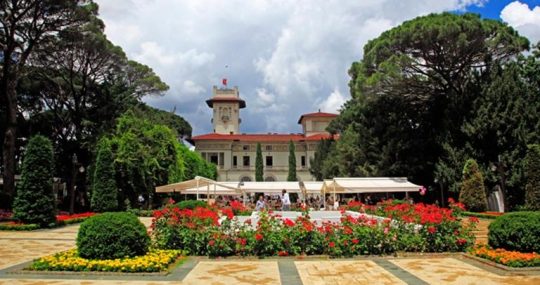
Palace Weddings on the Ottoman Dynasty
Shows and fireworks on the Golden Horn
That day the heart of Istanbul and of the empire was beating at this procession.
The participants wore their best outfits and carried their most valuable arms and pistols. Ahmet III was trying to show his power and wealth to his people with, this street parade instead of revealing his supremacy to the entire world in the battlefields. With the feasts and festivities he organized, with the mansions he had built during the Tulip Era and with all the luxury, he had changed the outlook of the capital city and ushered a new epoch in the Empire. The wedding day was a historic day for Istanbul. Everybody on the streets was happy. Joy was in the air. The streets were overcrowded. The windows were wide open. Faces beneath the veils were praying for the happiness of the bride and for the wealth, dashing look of the Sultan and his procession.
The procession was literally throwing money on the streets. People were stepping on each other to snap the coins. The procession arrived Eyiip, at the palace, prepared for Fatma Sultan. The procession participants disintegrated. Everyone had an entertainment to watch. Padishah and his wife went back to their palace. In the evening shows were staged on the Golden Horn, while fireworks were being lit on rafts.
Silahtar Ali Pasha dies in war
After this tiring and overwhelming wedding, which lasted for 25 days…
Silahtar Ali Pasha could not have Fatma Sultan. He had to send her back to the palace and wait for a while until she grows up and becomes a young lady. Silahtar Ali Pasha had to wait eight years for Fatma Sultan’s adolescence. He never had a chance to have a single private moment with her. Unfortunately, he died in Pclervaradin War before he could reunite with his fiancee, for whom he spent a fortune and organized feasts for weeks in order to gain supporters for his love. He became a martyr before he could realize his dreams.
Kosem Sultan marries her daughters
In the Ottoman Empire, the Sultans could marry before they were adolescents, but they could not share the same house with their spouses. This tradition was started by the well-known empress, Valide Kosem Sultan. For the sake of fortifying her position in the palace, Kosem Sultan married her minor daughters with the elite and reputable pashas of the time. Likewise, Ahmet 1 married her daughters Ayse Sultan and Fatma Sultan at the age of 13.
Sultan Ibrahim married Gevher Sultan at 3, Beyhan Sultan at 2. Emine, Ay§e and Safiye Sultans, the three daughters of Mustafa II, were married at 7. As mentioned above, Ahmet III had his daughters Fatma and Ummugulsum married at 5 and 2. Moreover, he married Atike Sultan at 12. Mustafa III married his son §ah Sultan at 3. This abnormality continued until the reign of MahmuL II, who pul an end to this situation and set the marriage time as the adolescence.
Multiple marriages
This weird tradition described above and the ongoing wars had a natural consequence. The sultans were widowed many times and were married more than once. The daughters of Ahmet I, Ayse, Fatma and Safiye, all married 6 times, which was a dynasty record. This record is followed by Safiye and Emine, daughters of Mustafa II, who married 4 times. So did Atike Sultan, daughter of Ahmet III.
Source: https://www.ensarislamoglu.com/palace-weddings-ottoman-dynasty/
0 notes
Text
International Known Queens & Empresses (4/?)
Haseki Hürrem Sultan


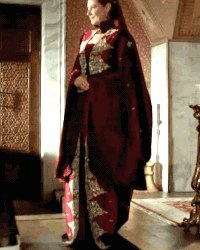



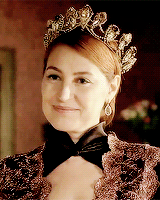
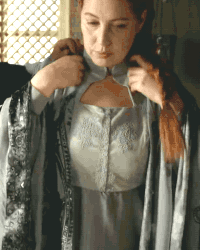


Daughter of Lisovsky (?)
Wife (Haseki Sultan) of Suleiman the Magnificent
Mother of Sehzade Mehmed, Mihrimah Sultan, Sehzade Abdullah, Sultan Selim II, Sehzade Bayezid, and Sehzade Cihangir
Grandmother of Ayse Hümasah Sultan, Sultanzade Osman (Mihrimah), Sultan Murad III, Sehzade Mehmed (Selim), Sehzade Abdullah (Selim), Sehzade Cihangir (Selim), Sehzade Mustafa (Selim), Sehzade Suleiman (Selim), Ismihan Sultan (Selim), Gevherhan Sultan (Selim), Sah Sultan (Selim), Fatma Sultan, Sehzade Orhan, Sehzade Osman (Bayezid), Sehzade Abdullah (Bayezid), Sehzade Mahmud (Bayezid), Mihrümah Sultan (Bayezid), Hatice Sultan (Bayezid), Ayse Sultan (Bayezid), and Hanzade Sultan (Bayezid)
12 notes
·
View notes
Photo

Palace Weddings on the Ottoman Dynasty
Shows and fireworks on the Golden Horn
That day the heart of Istanbul and of the empire was beating at this procession.
The participants wore their best outfits and carried their most valuable arms and pistols. Ahmet III was trying to show his power and wealth to his people with, this street parade instead of revealing his supremacy to the entire world in the battlefields. With the feasts and festivities he organized, with the mansions he had built during the Tulip Era and with all the luxury, he had changed the outlook of the capital city and ushered a new epoch in the Empire. The wedding day was a historic day for Istanbul. Everybody on the streets was happy. Joy was in the air. The streets were overcrowded. The windows were wide open. Faces beneath the veils were praying for the happiness of the bride and for the wealth, dashing look of the Sultan and his procession.
The procession was literally throwing money on the streets. People were stepping on each other to snap the coins. The procession arrived Eyiip, at the palace, prepared for Fatma Sultan. The procession participants disintegrated. Everyone had an entertainment to watch. Padishah and his wife went back to their palace. In the evening shows were staged on the Golden Horn, while fireworks were being lit on rafts.
Silahtar Ali Pasha dies in war
After this tiring and overwhelming wedding, which lasted for 25 days…
Silahtar Ali Pasha could not have Fatma Sultan. He had to send her back to the palace and wait for a while until she grows up and becomes a young lady. Silahtar Ali Pasha had to wait eight years for Fatma Sultan’s adolescence. He never had a chance to have a single private moment with her. Unfortunately, he died in Pclervaradin War before he could reunite with his fiancee, for whom he spent a fortune and organized feasts for weeks in order to gain supporters for his love. He became a martyr before he could realize his dreams.
Kosem Sultan marries her daughters
In the Ottoman Empire, the Sultans could marry before they were adolescents, but they could not share the same house with their spouses. This tradition was started by the well-known empress, Valide Kosem Sultan. For the sake of fortifying her position in the palace, Kosem Sultan married her minor daughters with the elite and reputable pashas of the time. Likewise, Ahmet 1 married her daughters Ayse Sultan and Fatma Sultan at the age of 13.
Sultan Ibrahim married Gevher Sultan at 3, Beyhan Sultan at 2. Emine, Ay§e and Safiye Sultans, the three daughters of Mustafa II, were married at 7. As mentioned above, Ahmet III had his daughters Fatma and Ummugulsum married at 5 and 2. Moreover, he married Atike Sultan at 12. Mustafa III married his son §ah Sultan at 3. This abnormality continued until the reign of MahmuL II, who pul an end to this situation and set the marriage time as the adolescence.
Multiple marriages
This weird tradition described above and the ongoing wars had a natural consequence. The sultans were widowed many times and were married more than once. The daughters of Ahmet I, Ayse, Fatma and Safiye, all married 6 times, which was a dynasty record. This record is followed by Safiye and Emine, daughters of Mustafa II, who married 4 times. So did Atike Sultan, daughter of Ahmet III.
Source: https://www.ensarislamoglu.com/palace-weddings-ottoman-dynasty/
0 notes
Text
Portrait of the daughters of Mehmed IV / IV. Mehmed lányainak portréja
IV. Mehmed szultánnak csupán három lánya érte meg biztosan a felnőttkort. Only three of Mehmed IV's daughters reached adulthood for sure.
Hatice Sultan
Hatice was Mehmed's eldest daughter, born in 1660 (or earlier). Her mother was probably Emetullah Rabia Gülnüş Sultan. Her wedding took place in 1675, after her father returned home from the Polish campaign and organized a huge series of ceremonies to crown the victory. It was then that the two brothers of Hatice, Mustafa (later Mustafa II) and Ahmed (later Ahmed III), were circumcised. Hatice Sultan’s husband was Musahip Sarıkçı Mustafa Pasha, with whom their first child, Sultanzade Mehmed Bey, was born the following year. Then in 1677 another son was born, Hasan Bey.
Hatice was widowed in October 1686, and from then on her sons were taken to the palace to be educated there. She lived as a widow for a time but was remarried in 1691. This time Moralı Hasan Pasha became her husband, who rose to the rank of Grand Vizier. After 1695, Hatice Sultan gave birth to a girl, Ayşe. We know this because it was recorded that after the birth, the Valide Sultan, Emetullah Rabia Gülnüş, visited her daughter in her palace. And Emetullah Rabia Gülnüş was a valide from 1695. The little girl probably died in 1717.
A high rank, an influental life was soon followed by a loss of grace, and Hatice's husband was exiled to Izmit in 1704. Hatice asked permission from the sultan to go with her husband, which she received, so she also traveled to Izmit. In 1707 the pasha was then pardoned, and was made the governor of Rakka. Hatice no longer followed the pasha there but returned to Istanbul. The pasha died in December 1713 and Hatice was widowed again. She never remarried.
Hatice spent her widowhood with collection porcelains and making parties. One of these parties happened during the disastrous revolt of 1730. We cannot rule out that she was also part of the rebellion. She was holding a banquet for the sultan and the grand vizier, along other high-ranking dignitaries, at her palace and it seems like she prevented the grand vizier from moving on to Istanbul that night in order to take immediate action against the rebels. We dont know if she did that because she secretly was a member of the opposition party, or she was just making a mistake? Anyhow, it led to her brother Ahmed Ill’s dethronement.
She lived a long life, seeing the reign of a total of six sultans: her father Mehmed IV; her uncles Suleiman II and Ahmed II; younger brothers Mustafa II and Ahmed III; but even her nephew's reign as she was alive during the reign of Mahmud I. She died on July 5, 1743, and was buried in the complex of her grandmother, Turhan Hatice.

Fatma Emetullah Sultan
Certainly she was born after 1675, because the ambassador report written in 1675 does not list her among Mehmed's children. Usually 1675 is given as her date of birth for this reason, but considering that she was married in 1695, it seems to be early in 1675, her date of birth may be closer to 1680. The identity of her mother is likely Emetullah Rabia Gülnüş, based on her name.
Her first husband was Tırnakçı Çerkez İbrahim Pasha, whom she married in September 1695. Their first child, Rukiye Hanimsultan was born in 1696. Rukiye Hanimsultan reached adulthood and died around 1720. About her daughters we know that: in 1708, Rukiye Hanimsultan married Sirke Osman Paşa (d. 1724), who had been called from Bosnia; after Rukiye Hanimsultan died, Sirke Osman Paşa married Emetullah Sultan, one of the daughters of Mustafa II.
Fatma Emetullah's first husband was executed in 1697, and then the widow sultana remarried in 1698. This time Topal Yusuf Pasha was the designated husband from whom a daughter was born in 1700, Safiye Hanimsultan, who died young, presumably in 1711. Fatma Emetullah is believed to have died in December 1700 of birth-complications due to the birth of Safiye Hanimsultan. Other sources suggests she died of plague, another suggests she died of tuberculosis. Her funeral procession started from her mansion in Bayezit, with the Chief of Black Eunuchs Nezir Agha and her husband Yusuf Pasha leading it, passed in front of the Alay köşkü, and terminated at the Valide Mosque, where she was laid to rest next to her father Mehmed IV.

Ümmügülsüm / Ümmi Sultan
She was born around 1680 but the identity of her mother is unknown. One of her first mentioning is from a harem register of 1691, when her uncle Suleiman II moved the harem to Edirne. She is the only niece to show up on the list, which raises interesting questions. Her sister, Fatma Emetullah, was also not yet married at the time, yet she is not mentioned in the list. This is because Fatma Emetullah certainly spent her time in the Old Palace next to her mother, Emetullah Rabia Gülnüş. The fact that Ümmügülsüm was not in the Old Palace may indicate that she may not have been the child of Emetullah Rabia Gülnüş Sultan or Afife Hatun living there. Her mother could have been someone else who might have already died, so the little princess could stay at Topkapi Palace.
Ümmügülsüm was very close to her uncle Ahmed II. She was the one who married her off in December 1693 to his close servant, Silahdar Çerkes Osman Pasha. They settled in a luxurious palace with the Pasha and had at least two children together. Their daughters were Hatice Hanimsultan and Fatma Hanimsultan, of whom Fatma probably reached adulthood and died around 1730. We know nothing more about the children of Ümmügülsüm. Ümmügülsüm and the pasha were very influential, living a magnificent life. In April 1694, for example, they held a huge party in their palace, for which the sultan, his Haseki - the last Haseki - Rabia, and several political leaders attended. Ümmügülsüm Sultan died before her fortieth birthday in 1720. Some say smallpox caused her death. She was buried in the mosque complex of Turhan Hatice.
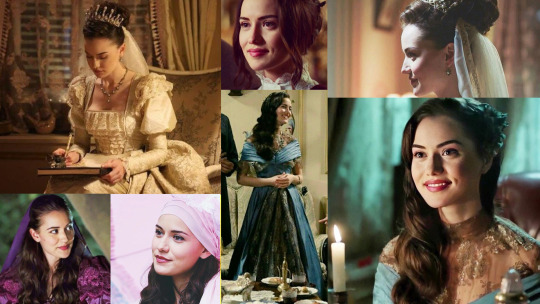
Beside these daughters, Mehmed IV's had other daughters as well. One of them is Ayşe, who was born around 1673/4, and died young. Her mother was certainly Emetullah Rabia Gülnüş, the Haseki Sultan of Mehmed. All we know is that the princess was promised to Kara Mustafa Pasha around 1675/6, but the wedding could never take place because the princess did not reach adulthood.
Two anonymous sultanas are also known, who are listed as daughters of Mehmed. All we know is one of them married Kasım Mustafa Pasha in 1687, who was Edirne's beylerbey. The other girl is said to have been the daughter of Gülbeyaz. Beside them, some also mention a girl named Gevher or Gevherhan, who may have been Mehmed IV’s sister rather than her daughter and they consider her as her daughter just because of a mistake.
Used sources: J. Dumas - Les perles de nacre du sultanat; N. Sakaoglu - Bu Mülkün Kadin Sultanlari; M. C. Uluçay - Padişahlarin Kadinlri ve Kizlari; A. D. Alderson - The Structure of the Ottoman Dynasty; L. Peirce - The Imperial Harem: Women and Sovereignty in the Ottoman Empire; C. Finkel - Osman's Dream: The Story of the Ottoman Empire; M. Özgüleş - The women who built the Ottoman Empire: Female Patronage and the Architectural Legacy of Gülnüş Sultan
* * *
Hatice Sultan
Hatice volt IV. Mehmed legidősebb lánya, 1660-ban (vagy korábban) született. Édesanyja valószínűleg a szultán Haszekije, Emetullah Rabia Gülnüş volt. Esküvőjére 1675-ben került sor, miután apja hazatért a lengyel hadjáratból és a győzelmet megkoronázván hatalmas ünnepségsorozatot rendezett. Ekkor került sor Hatice két öccsének, Musztafának (későbbi II. Musztafa) és Ahmednek (későbbi III. Ahmed) a körülmetélésére. Hatice Sultan férje Musahip Sarıkçı Mustafa Pasa lett, akivel a következő évben megszületett első közös gyermekük, Sultanzade Mehmed Bey. 1677-ben született még egy fiuk, Hasan Bey.
Hatice 1686 októberében megözvegyült, fiai innentől a palotába kerültek, hogy ott oktassák őket. Egy ideig özvegyen élte életét, de 1691-ben újraházasították. Ezúttal Moralı Hasan Pasa lett a férje, aki a nagyvezíri rangig emelkedett. 1695 után Hatice Sultan életet adott egy kislánynak, Ayşénak. Ezt onnan tudjuk, mert feljegyezték, hogy a szülés után a valide szultána, Emetullah Rabia Gülnüş meglátogatta lányát annak palotájában. A kislány valószínűleg 1717-ben hunyt el.
A magas rangot, befolyásos életet hamarosan kegyvesztettség követte és Hatice férjét 1704-ben Izmitbe száműzték. Hatice engedélyt kért a szultántól, hogy férjével tarthasson, melyet megkapott, így ő is Izmitbe utazott. 1707-ben aztán a pasának megbocstottak és Rakka kormányzójává tették meg. Hatice oda már nem követte a pasát, hanem visszatért Isztambulba. A pasa 1713 decemberében elhunyt, Hatice pedig megözvegyült. Hatice sosem házasodott újra.
Özvegységének éveit arra használta, hogy porcelánt gyűjtött, és ünnepélyes esteket szervezett. Az egyik ilyen este épp egybeesett az 1730-as lázadással. Egyesek szerint Hatice maga is felelős volt az eseményekért, ugyanis nem engedte a nagyvezírnek - aki jelen volt az estélyen -, hogy távozzon és a lázadással törődjön. Lehet, hogy Hatice ezt szánt szándékkal tette, mert a lázadókkal volt titkon, de az is lehet, hogy egyszerűen végzetes hibát vétett. Akárhogyan is, a lázadás során Hatice öccsét, III. Ahmedet trónfosztották.
Hosszú életet élt, összesen hat szultán uralkodását látta: apjáét IV. Mehmedét; nagybátyjaiét II. Szulejmánét és II. Ahmedét; öccseiét II. Musztafáét és III. Ahmedét; de még unokaöccse I. Mahmud uralkodása alatt is életben volt. 1743 július 5-én hunyt el és nagyanyja, Turhan Hatice komplexumában temették el.

Fatma Emetullah Sultan
Minden bizonnyal 1675 után született, mert az 1675-ben írt követi jelentés nem listázza IV. Mehmed gyermekei között. Általában 1675-t adják meg emiatt születési idejének, de figyelembe véve, hogy 1695-ben házasították ki, az 1675 korainak tűnik, inkább lehet születési ideje közelebb az 1680-hoz. Édesanyja kiléte neve alapján valószínűsíthető, így Emetullah Rabia Gülnüş szultána lányaként tekintenek Fatma Emetullahra.
Első férje Tırnakçı Çerkez İbrahim Pasa volt, akivel 1695 szeptemberében házasodtak össze. Egy gyermekük született, Rukiye Hanimsultan 1696-ban. Rukiye Hanimsultan megérte a felnőttkor és 1720 környékén hunyt el. Fatma Emetullah első férjét 1697-ben végezték ki, majd az özvegy szultána 1698-ban újra férjhez ment. Ezúttal Topal Yusuf Pasa volt a kijelölt férj, akitől 1700-ban egy lánya született, Safiye Hanimsultan, aki fiatalon elhunyt, vélhetően 1711-ben. Fatma Emetullah vélhetőleg A Safiye Hanimsultan születése során fellépő szülési komplikációk miatt halt meg 1700 decemberében.

Ümmügülsüm/Ümmi Sultan
1680 között született, édesanyja kiléte nem ismert. Egyik első említése egy 1691-ből származó háremjegyzék, mikor nagybátyja II. Szulejmán a háremet Edirnébe kölöztette. Ő az egyetlen unokahúg, aki a jegyzékben feltűnik, ami érdekes kérdéseket vet fel. Nővére, Fatma Emetullah ekkor szintén nem volt még kiházasítva, őt mégsem említi a jegyzék. Ennek oka, hogy Fatma Emetullah minden bizonnyal a Régi Palotában töltötte idejét édesanyja, Emetullah Rabia Gülnüş mellett. Az, hogy Ümmügülsüm nem a Régi Palotában volt arra utalhat, hogy talán nem az ott élő Emetullah Rabia Gülnüş Sultan vagy Afife Hatun gyermeke volt. Édesanyja valaki más lehetett, aki talán már elhalálozott, így a kishercegnő a Topkapi Palotában maradhatott.
Ümmügülsüm igen közel állt nagybátyjához II. Ahmedhez. Ő volt az, aki kiházasította szultánát 1693 decemberében Silahdar Çerkes Osman Pasához. A Pasával fényűző plotában telepedtek le és legalább két gyermekük született. Lányaik, Hatice Hanimsultan és Fatma Hanimsultan voltak, akik közül Fatma valószínűleg megérte a felnőttkort és 1730 körül hunyt el. Nem tudunk mást Ümmügülsüm gyermekeiről. Ümmügülsüm és a pasa igen befolyásosak voltak, pezsgő életet éltek. 1694 áprilisában például hatalmas ünnepélyt rendeztek palotájukban, melyre hivatalos volt a szultán, annak haszekije - az utolsó Haszeki - Rabia és több politikai vezető is. Ümmügülsüm Sultan negyvenedik születésnapja előtt hunyt el, 1720-ban. Egyesek szerint himlő okozta a halálát. Turhan Hatice mecsetkomplexumában temették el.

Mehmednek a fentebb leírt lányok mellett voltak további lányai is. Egyikük, egy Ayşe nevű kislány volt, aki 1673/4 környékén született és korán meghalt. Édesanyja minden bizonnyal Emetullah, Rabia Gülnüş, a szultán Haszekije volt. Annyit tudunk, hogy a hercegnőt 1675/6 környékén odaígérték Kara Mustafa Pasához, ám az esküvő sosem jöhetett létre, mert a hercegnő nem érte meg a felnőtt kort.
Két névtelen szultána is ismert, akiket Mehmed lányaiként jegyeznek. Egyikükről annyit tudunk, hogy Kasım Mustafa Pasához ment nőül 1687-ben, aki Edirne helytartója volt. A másik lány a legendák szerint Gülbeyaz lánya volt. Mellettük néhányan egy Gevher vagy Gevherhan nevű lányt is szoktak említeni, aki lehet, hogy inkább volt Mehmed testvére, mint lánya és csupán keveredés miatt tekintik néhányan az ő lányaként.
Felhasznált források: J. Dumas - Les perles de nacre du sultanat; N. Sakaoglu - Bu Mülkün Kadin Sultanlari; M. C. Uluçay - Padişahlarin Kadinlri ve Kizlari; A. D. Alderson - The Structure of the Ottoman Dynasty; L. Peirce - The Imperial Harem: Women and Sovereignty in the Ottoman Empire; C. Finkel - Osman's Dream: The Story of the Ottoman Empire; M. Özgüleş - The women who built the Ottoman Empire: Female Patronage and the Architectural Legacy of Gülnüş Sultan
#ümmi#ümmügülsüm#fatma#fatma emetullah#gevher#gevherhan#Mehmed IV#turhan hatice#Emetullah Rabia Gülnüş#emetullah rabia#emetullah#rabia gülnüş#Hatice
24 notes
·
View notes
Photo
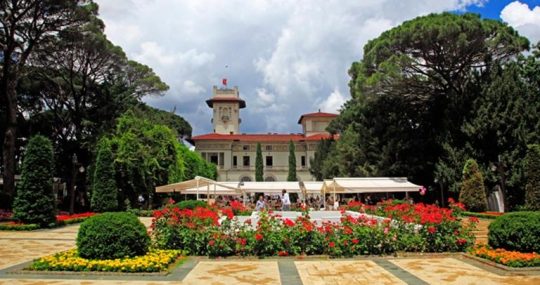
Palace Weddings on the Ottoman Dynasty
Shows and fireworks on the Golden Horn
That day the heart of Istanbul and of the empire was beating at this procession.
The participants wore their best outfits and carried their most valuable arms and pistols. Ahmet III was trying to show his power and wealth to his people with, this street parade instead of revealing his supremacy to the entire world in the battlefields. With the feasts and festivities he organized, with the mansions he had built during the Tulip Era and with all the luxury, he had changed the outlook of the capital city and ushered a new epoch in the Empire. The wedding day was a historic day for Istanbul. Everybody on the streets was happy. Joy was in the air. The streets were overcrowded. The windows were wide open. Faces beneath the veils were praying for the happiness of the bride and for the wealth, dashing look of the Sultan and his procession.
The procession was literally throwing money on the streets. People were stepping on each other to snap the coins. The procession arrived Eyiip, at the palace, prepared for Fatma Sultan. The procession participants disintegrated. Everyone had an entertainment to watch. Padishah and his wife went back to their palace. In the evening shows were staged on the Golden Horn, while fireworks were being lit on rafts.
Silahtar Ali Pasha dies in war
After this tiring and overwhelming wedding, which lasted for 25 days…
Silahtar Ali Pasha could not have Fatma Sultan. He had to send her back to the palace and wait for a while until she grows up and becomes a young lady. Silahtar Ali Pasha had to wait eight years for Fatma Sultan’s adolescence. He never had a chance to have a single private moment with her. Unfortunately, he died in Pclervaradin War before he could reunite with his fiancee, for whom he spent a fortune and organized feasts for weeks in order to gain supporters for his love. He became a martyr before he could realize his dreams.
Kosem Sultan marries her daughters
In the Ottoman Empire, the Sultans could marry before they were adolescents, but they could not share the same house with their spouses. This tradition was started by the well-known empress, Valide Kosem Sultan. For the sake of fortifying her position in the palace, Kosem Sultan married her minor daughters with the elite and reputable pashas of the time. Likewise, Ahmet 1 married her daughters Ayse Sultan and Fatma Sultan at the age of 13.
Sultan Ibrahim married Gevher Sultan at 3, Beyhan Sultan at 2. Emine, Ay§e and Safiye Sultans, the three daughters of Mustafa II, were married at 7. As mentioned above, Ahmet III had his daughters Fatma and Ummugulsum married at 5 and 2. Moreover, he married Atike Sultan at 12. Mustafa III married his son §ah Sultan at 3. This abnormality continued until the reign of MahmuL II, who pul an end to this situation and set the marriage time as the adolescence.
Multiple marriages
This weird tradition described above and the ongoing wars had a natural consequence. The sultans were widowed many times and were married more than once. The daughters of Ahmet I, Ayse, Fatma and Safiye, all married 6 times, which was a dynasty record. This record is followed by Safiye and Emine, daughters of Mustafa II, who married 4 times. So did Atike Sultan, daughter of Ahmet III.
Source: https://www.ensarislamoglu.com/palace-weddings-ottoman-dynasty/
0 notes